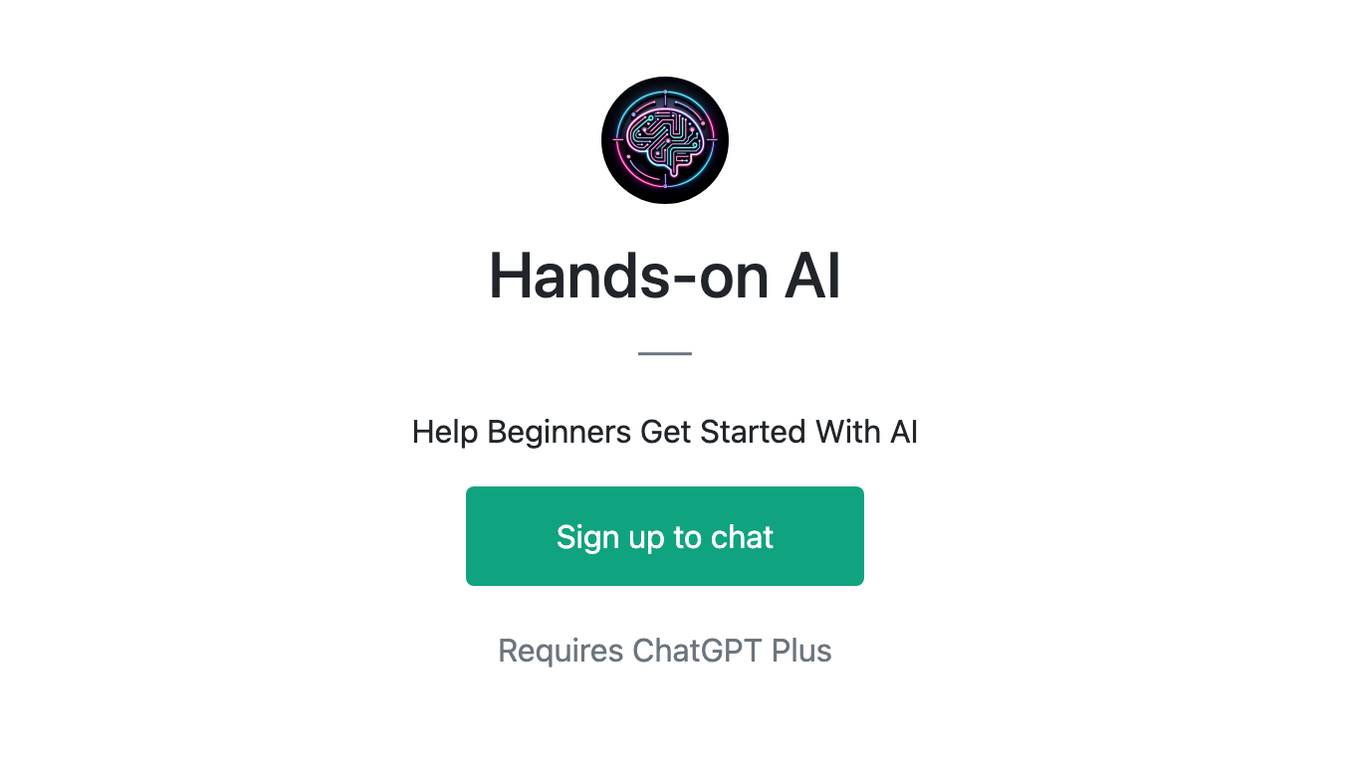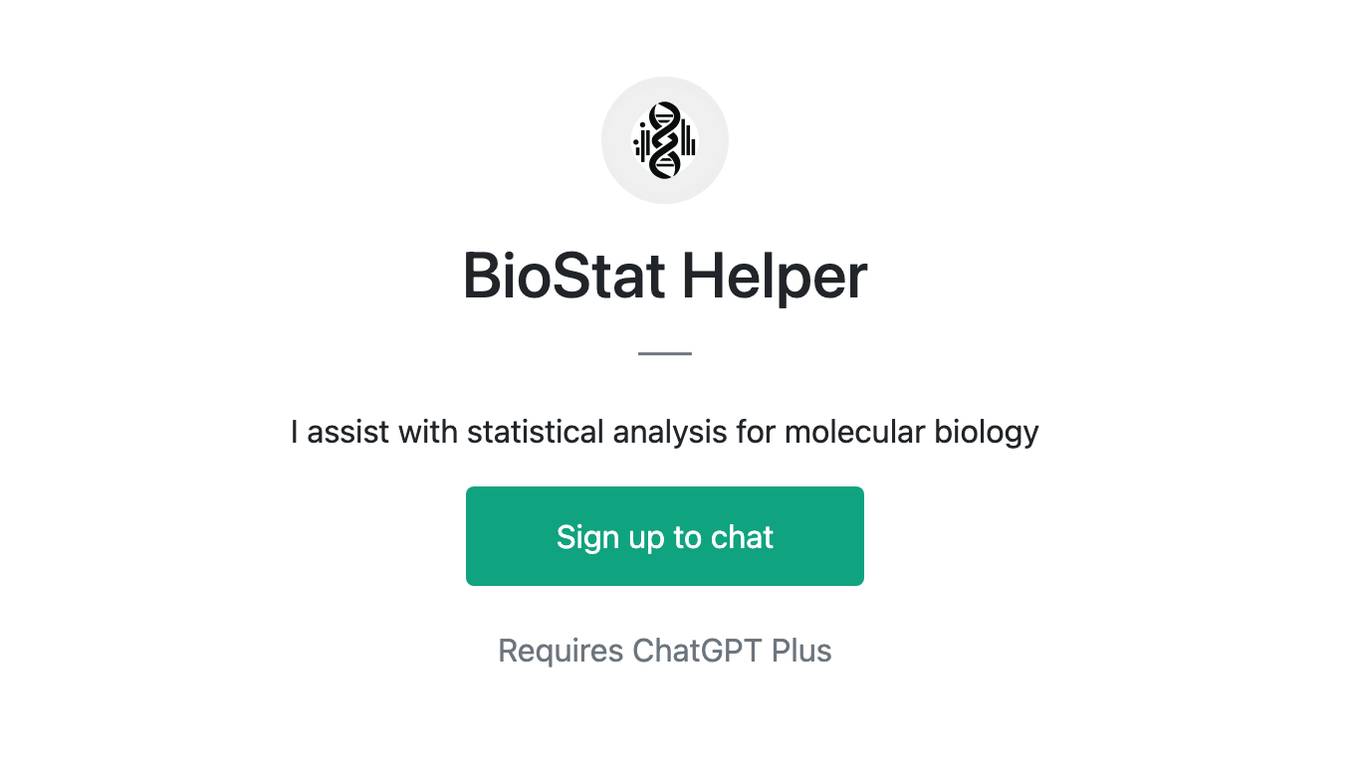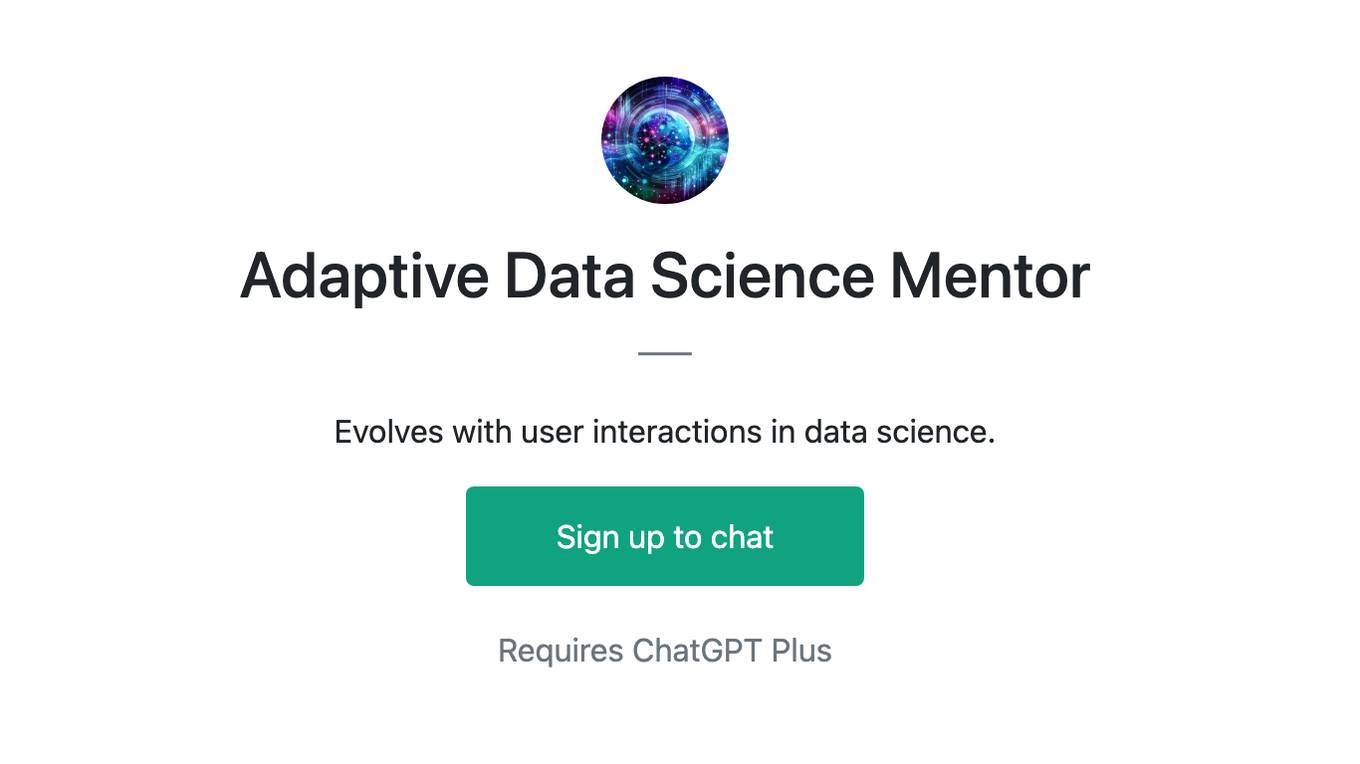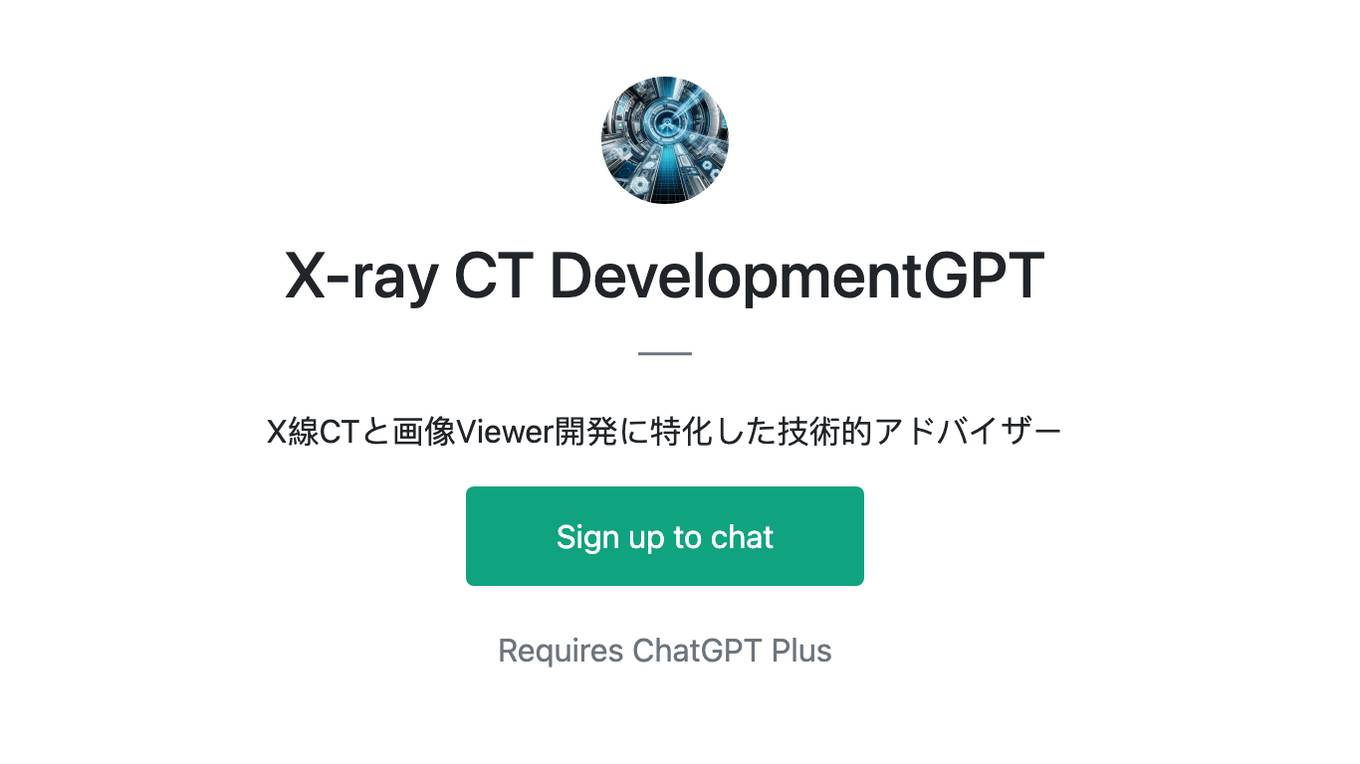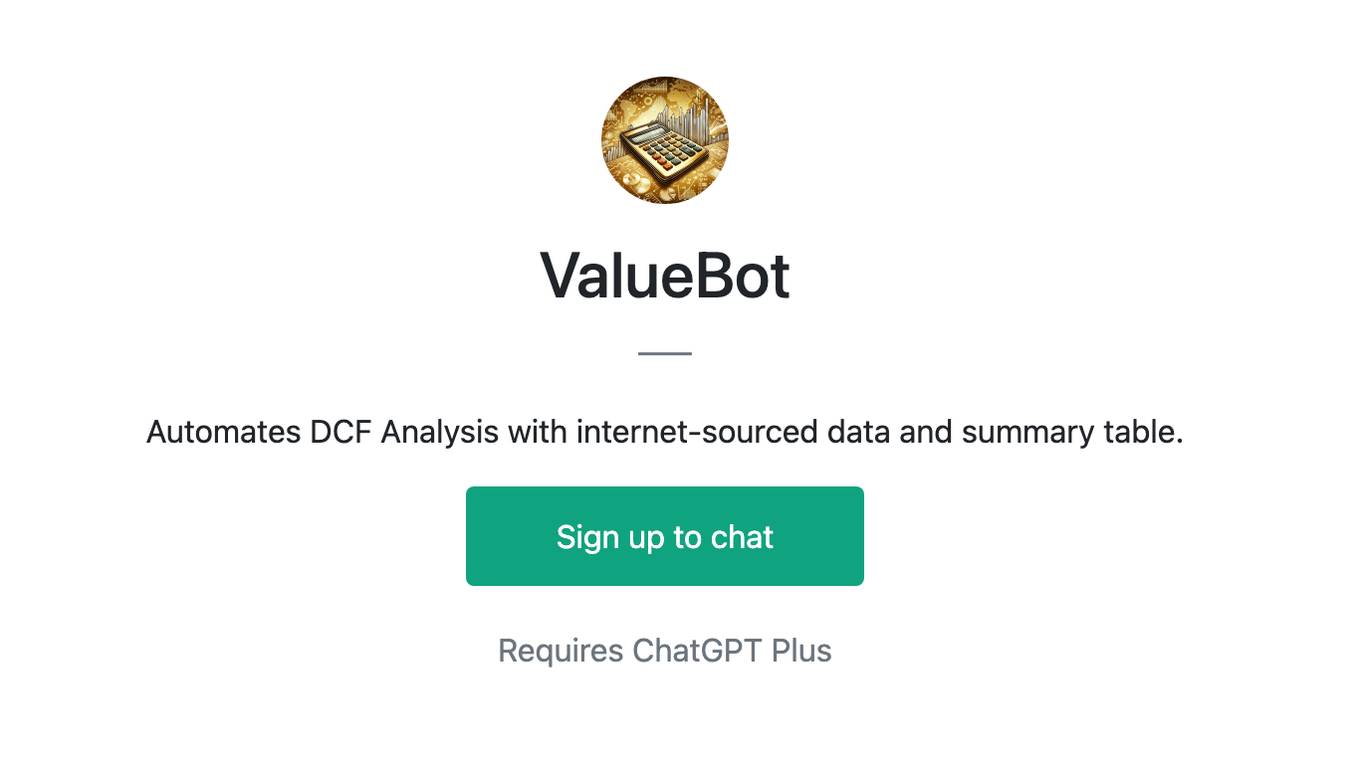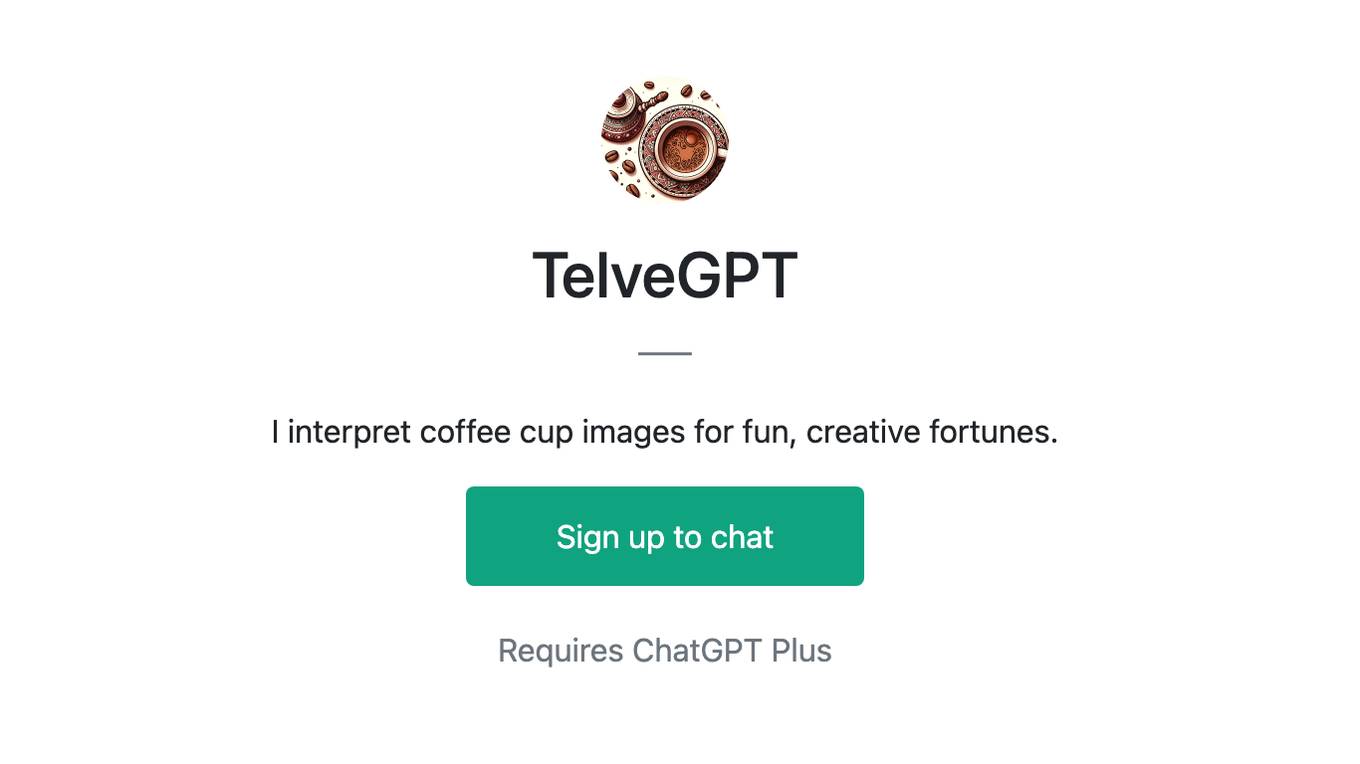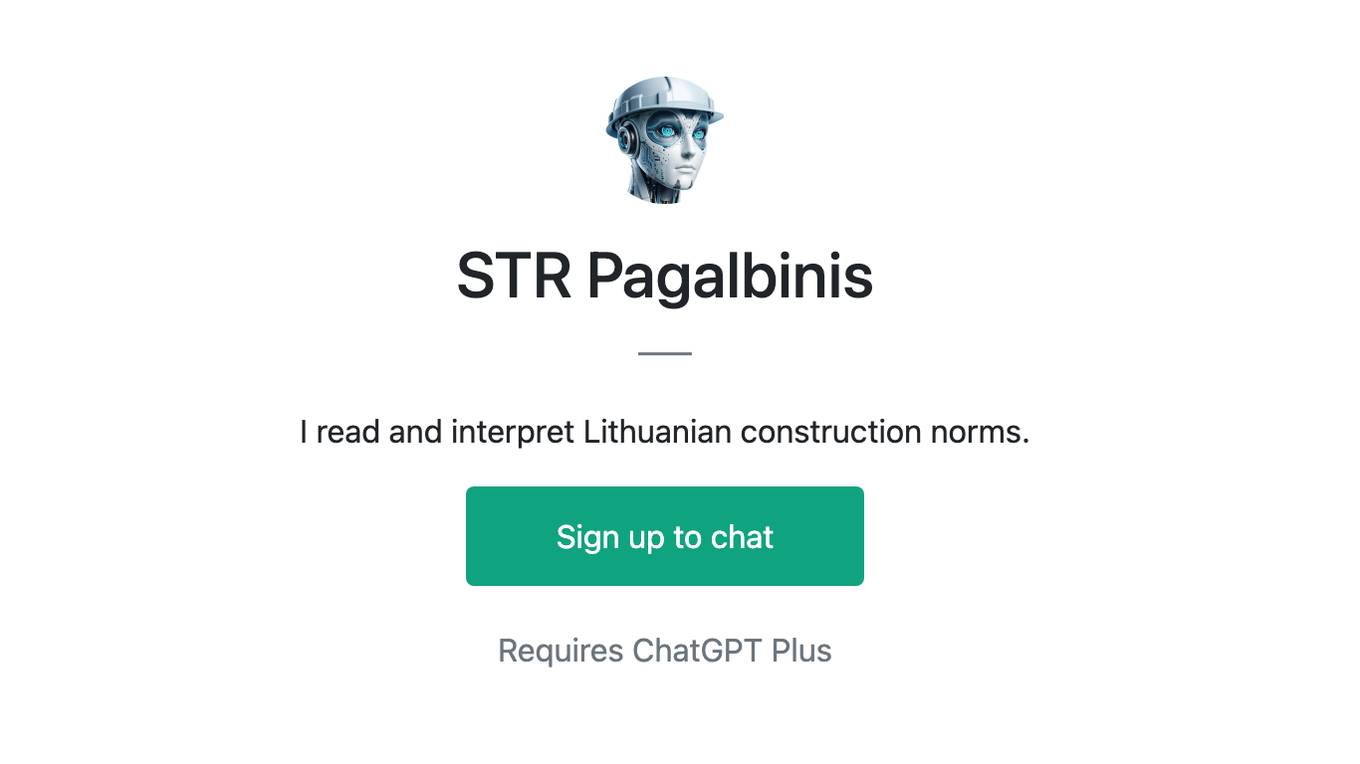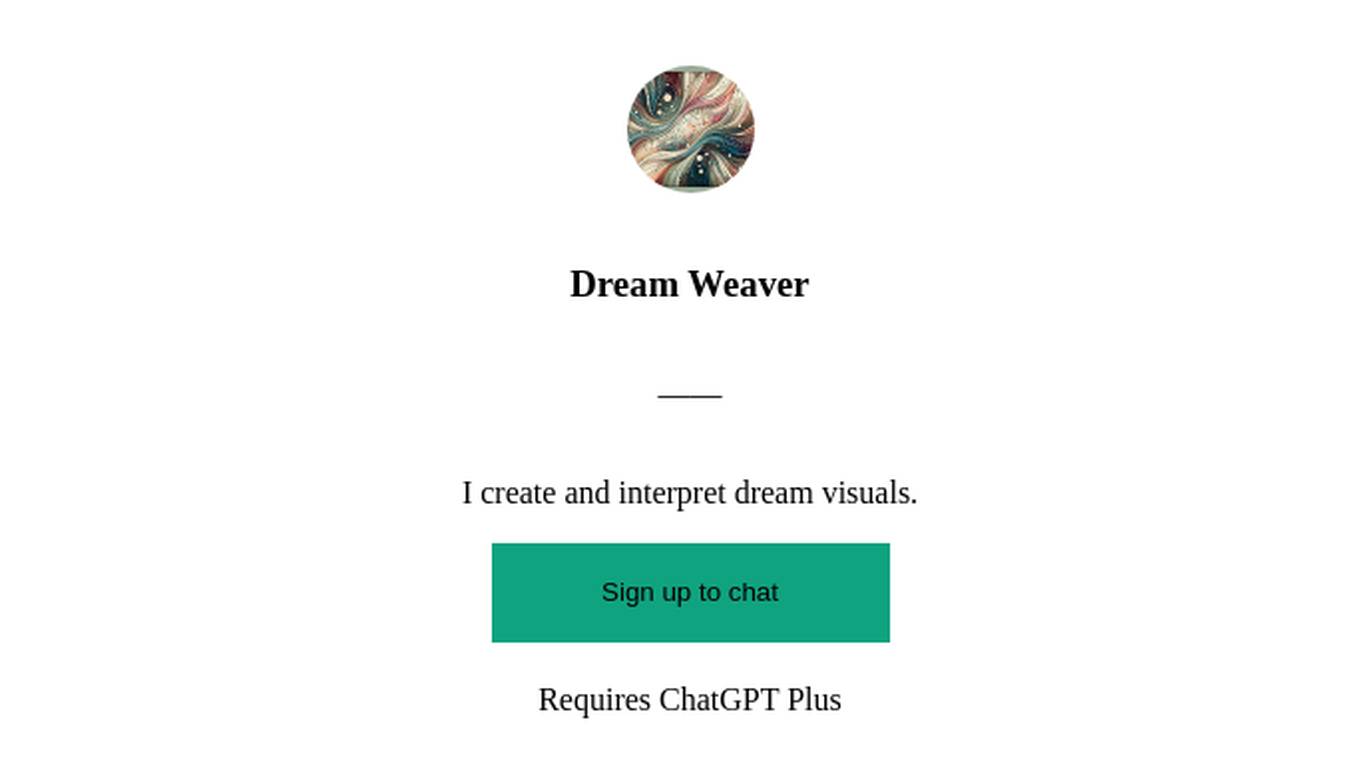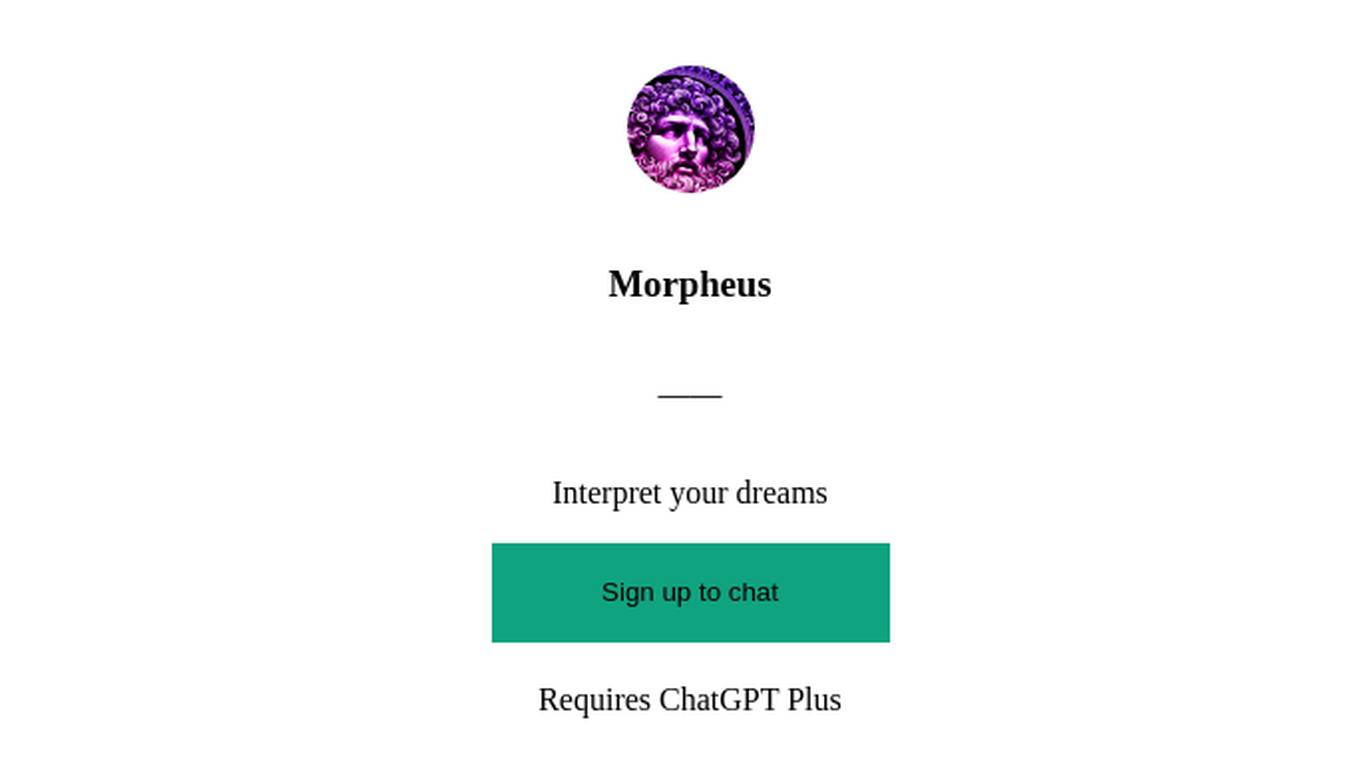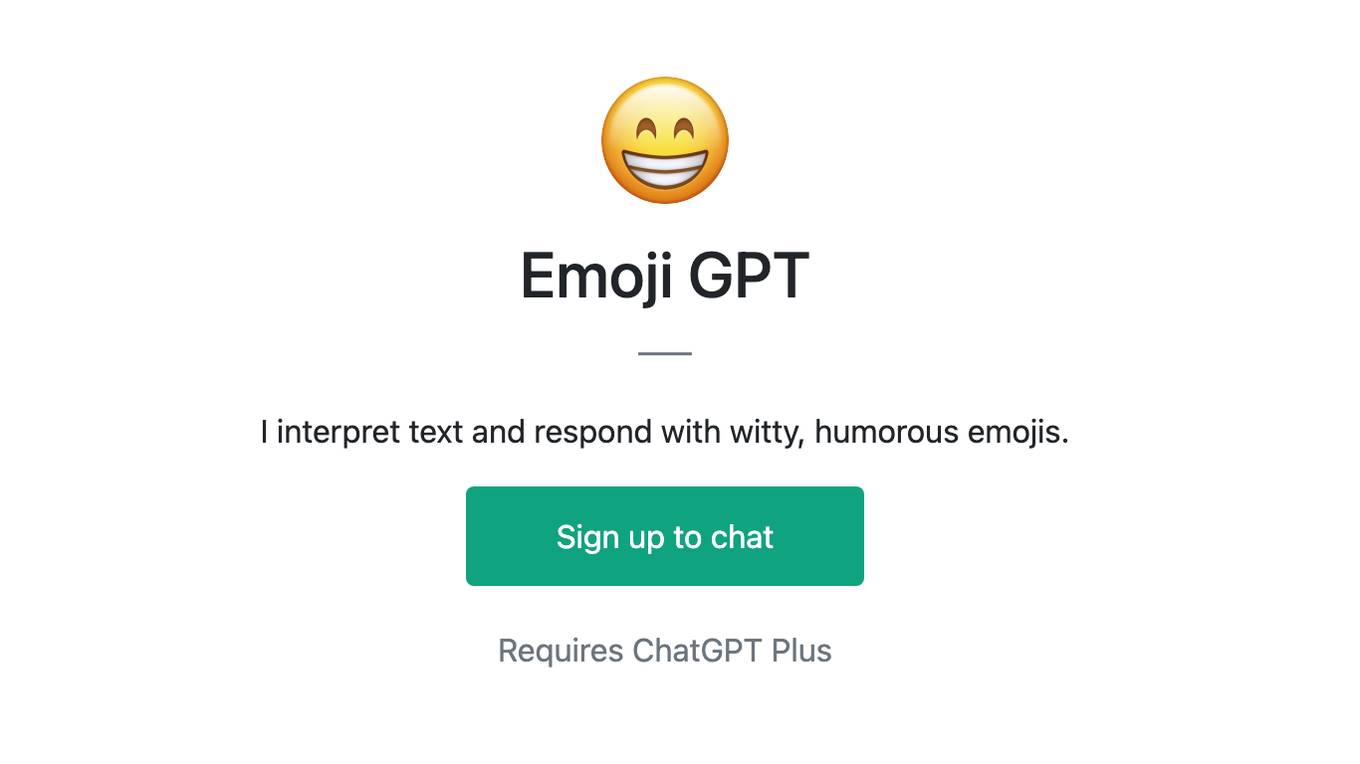Best AI tools for< Interpret Models >
20 - AI tool Sites
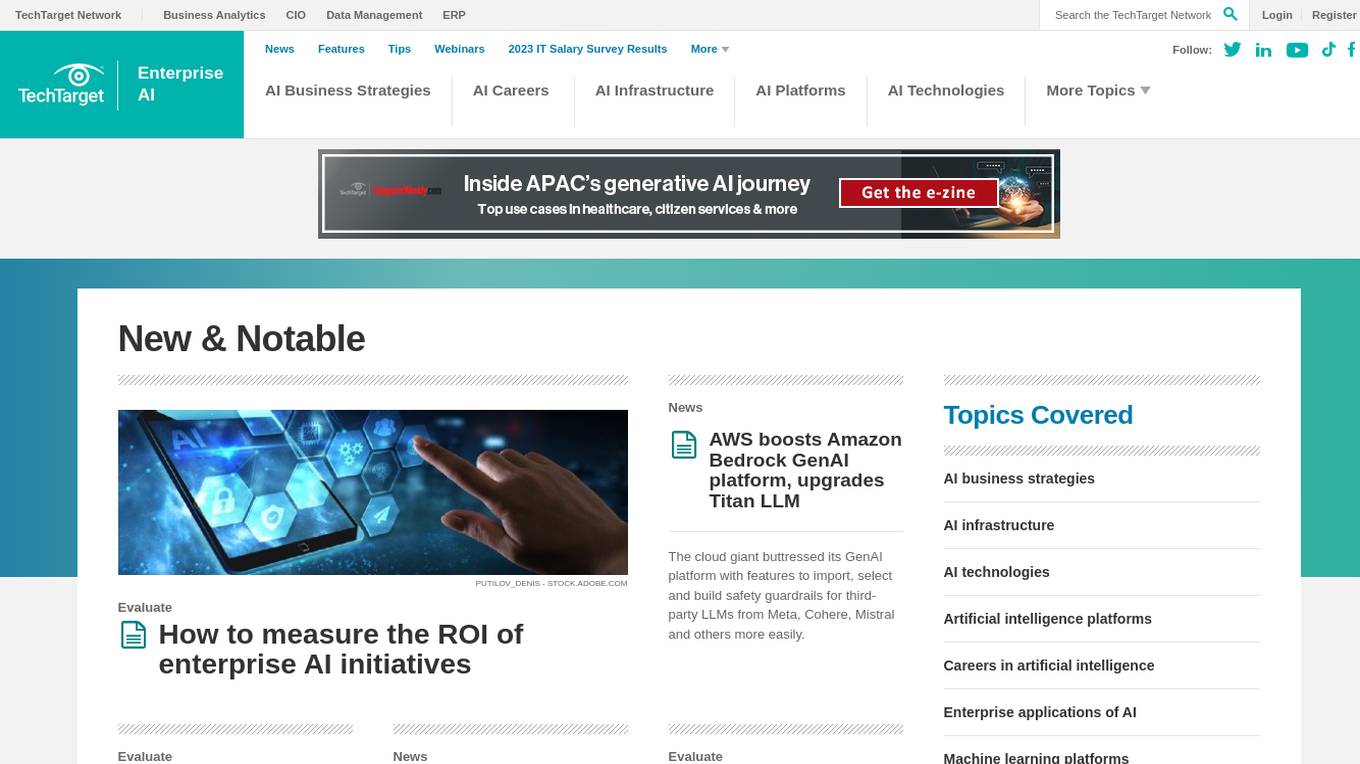
Enterprise AI
Enterprise AI provides comprehensive information, news, and tips on artificial intelligence (AI) for businesses. It covers various aspects of AI, including AI business strategies, AI infrastructure, AI technologies, AI platforms, careers in AI, and enterprise applications of AI. The website offers insights into the latest AI trends, best practices, and industry news. It also provides resources such as e-books, webinars, and podcasts to help businesses understand and implement AI solutions.
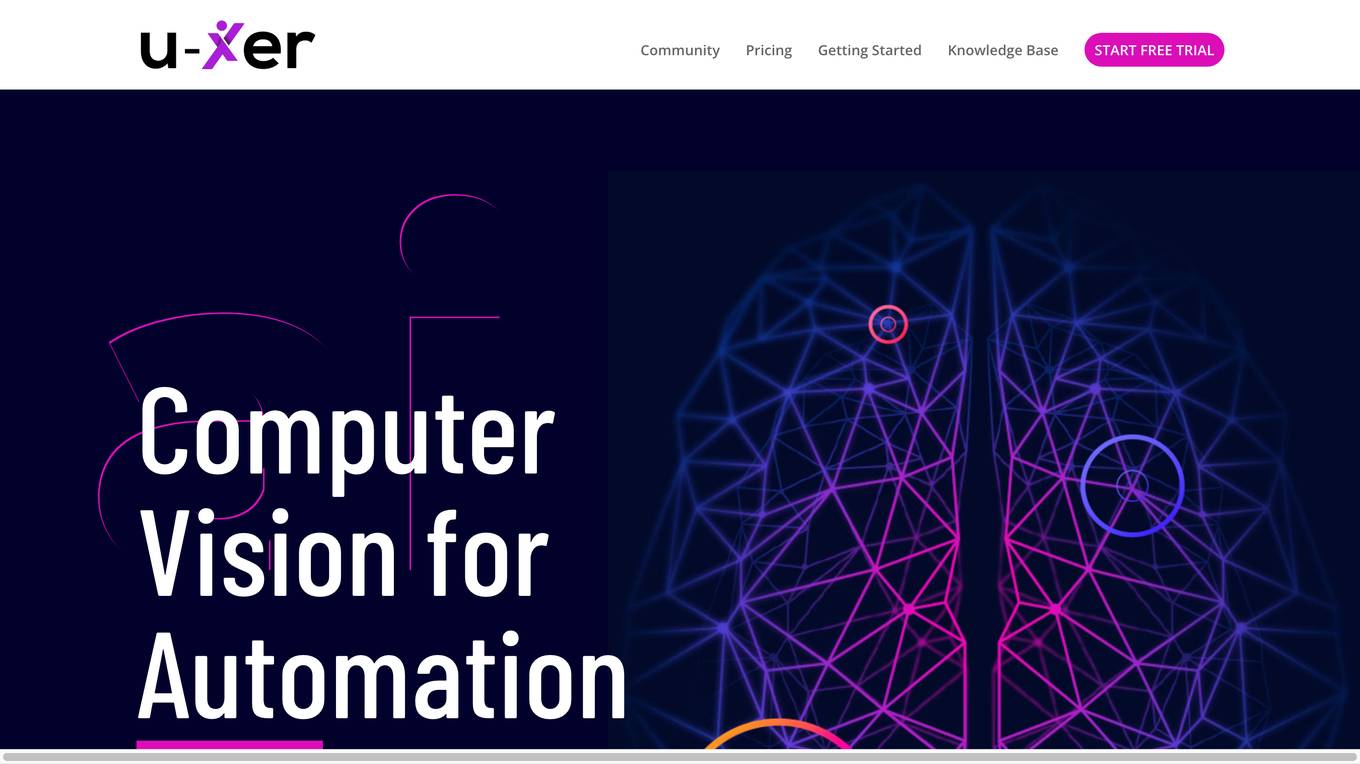
U-xer
U-xer is an innovative automation tool developed by Quality Museum Software Testing Services. It is designed to meet a broad range of needs, including Robotic Process Automation (RPA), test automation, and bot development. Crafted with user flexibility in mind, U-xer aims to be a user-friendly solution for your automation requirements! U-xer's unique screen recognition models interpret screens in the same way that humans do. This enables non-technical users to automate simple tasks, while allowing advanced users to tackle more complex tasks with ease. With U-xer, you can automate anything, anywhere, whether it's Web or Desktop. U-xer works seamlessly across all platforms with just a screenshot. Unlike other tools, U-xer interprets screens just like a human does, enabling more natural and accurate automation of a wide range of tasks.
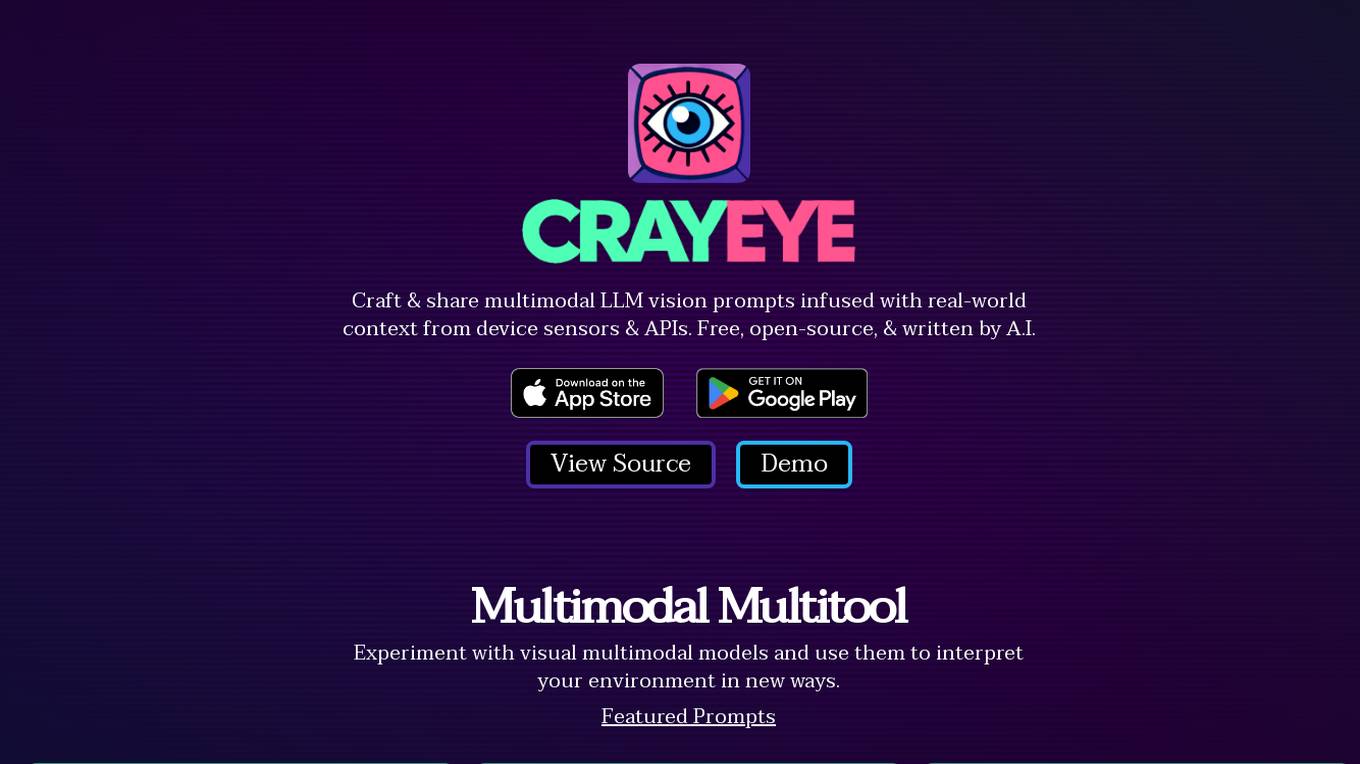
CrayEye
CrayEye is a multimodal multitool that allows users to craft and share vision prompts infused with real-world context from device sensors and APIs. It is a free, open-source tool written by AI, enabling users to experiment with visual multimodal models and interpret their environment in new ways. Users can analyze their surroundings using their smartphone's camera, customize prompts augmented by sensors and APIs, and share their creations with friends. CrayEye is a product of AI-driven development, offering a range of features to enhance user experience.

xAI Grok
xAI Grok is a visual analytics platform that helps users understand and interpret machine learning models. It provides a variety of tools for visualizing and exploring model data, including interactive charts, graphs, and tables. xAI Grok also includes a library of pre-built visualizations that can be used to quickly get started with model analysis.
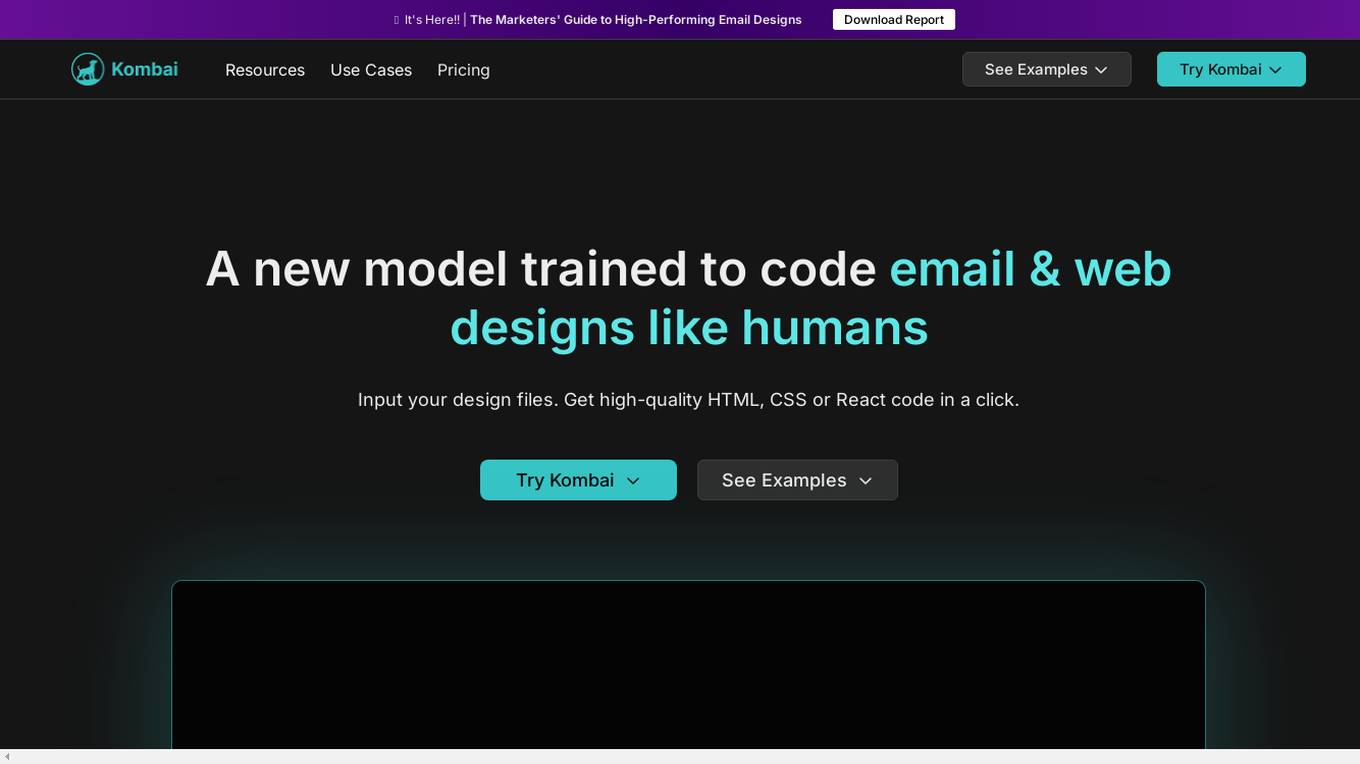
Kombai
Kombai is an AI tool designed to code email and web designs like humans. It uses deep learning and heuristics models to interpret UI designs and generate high-quality HTML, CSS, or React code with human-like names for classes and components. Kombai aims to help developers save time by automating the process of writing UI code based on design files without the need for tagging, naming, or grouping elements. The tool is currently in 'public research preview' and is free for individual developers to use.
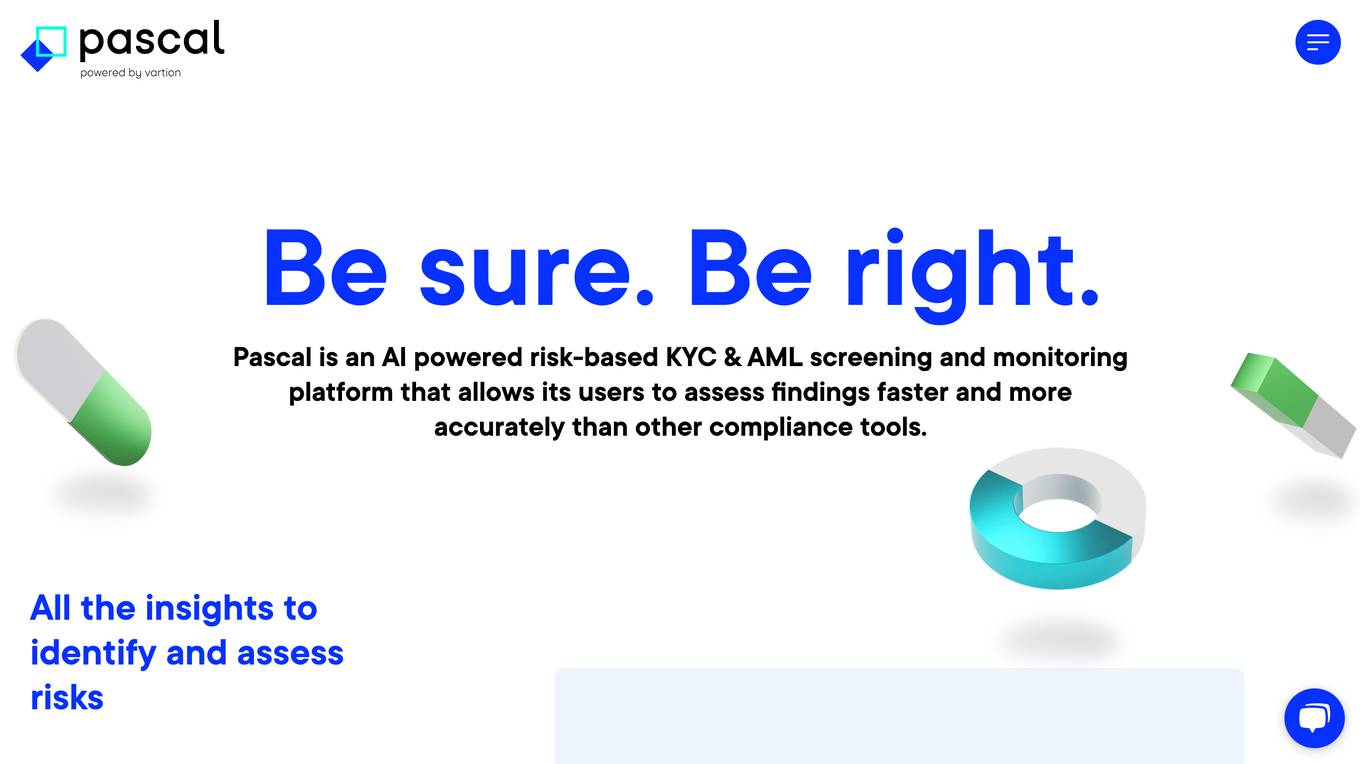
Pascal
Pascal is an AI-powered risk-based KYC & AML screening and monitoring platform that offers users the ability to assess findings faster and more accurately than other compliance tools. It utilizes AI, machine learning, and Natural Language Processing to analyze open-source and client-specific data, interpret adverse media in multiple languages, simplify onboarding processes, provide continuous monitoring, reduce false positives, and enhance compliance decision-making.
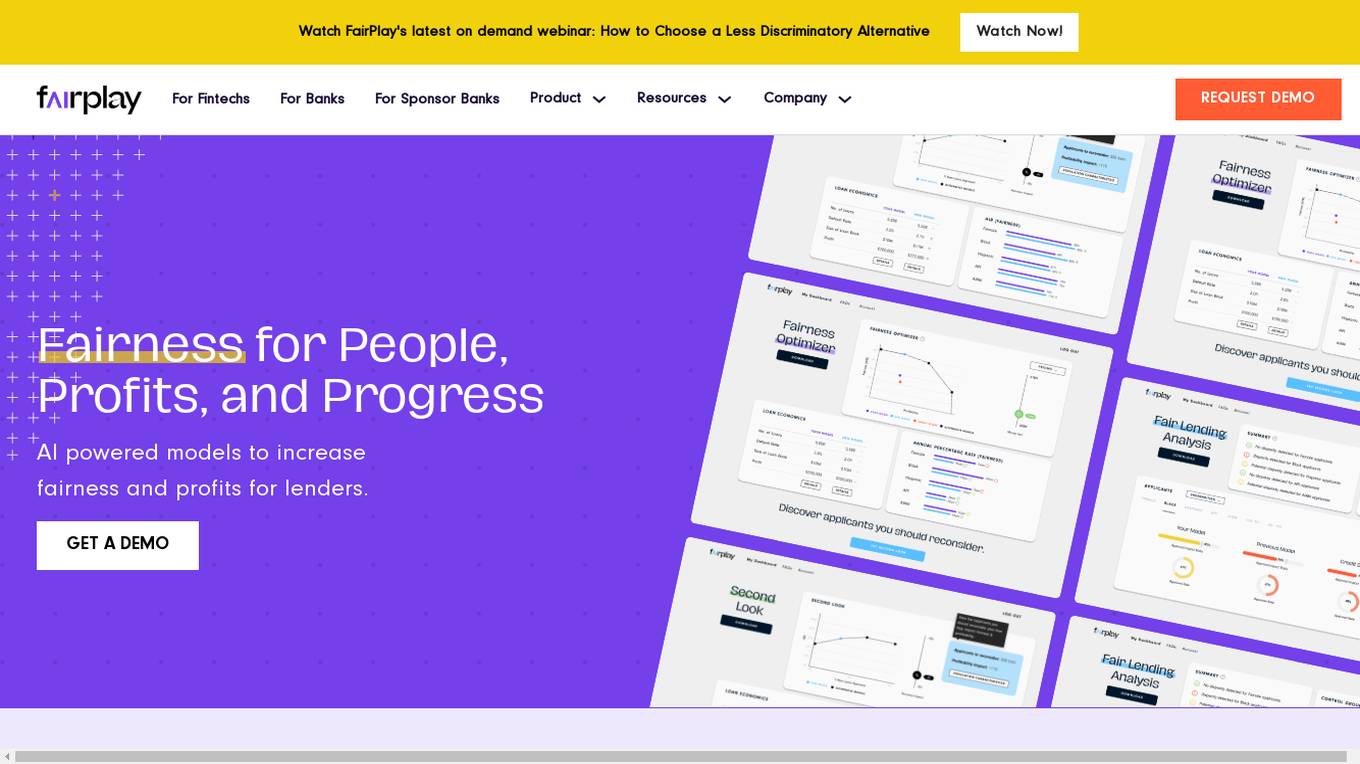
FairPlay
FairPlay is a Fairness-as-a-Service solution designed for financial institutions, offering AI-powered tools to assess automated decisioning models quickly. It helps in increasing fairness and profits by optimizing marketing, underwriting, and pricing strategies. The application provides features such as Fairness Optimizer, Second Look, Customer Composition, Redline Status, and Proxy Detection. FairPlay enables users to identify and overcome tradeoffs between performance and disparity, assess geographic fairness, de-bias proxies for protected classes, and tune models to reduce disparities without increasing risk. It offers advantages like increased compliance, speed, and readiness through automation, higher approval rates with no increase in risk, and rigorous Fair Lending analysis for sponsor banks and regulators. However, some disadvantages include the need for data integration, potential bias in AI algorithms, and the requirement for technical expertise to interpret results.
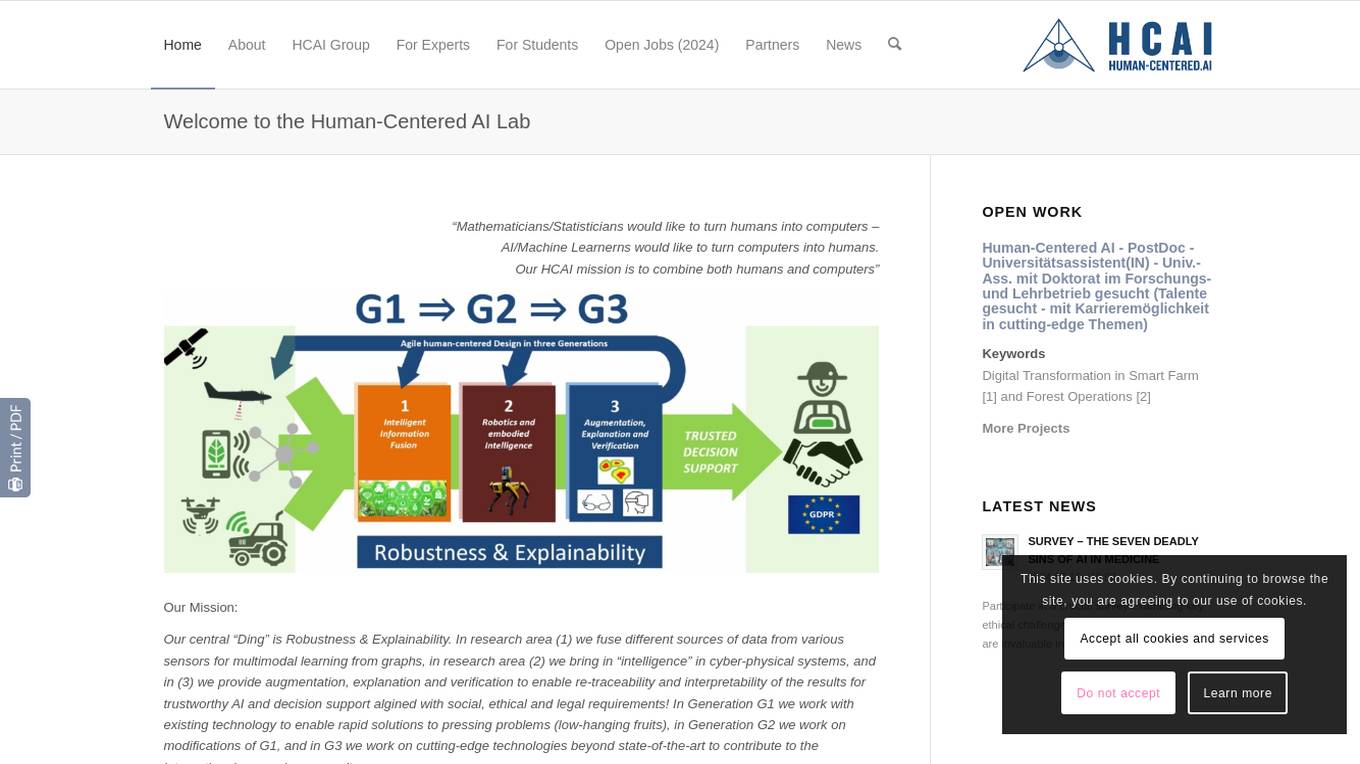
Human-Centred Artificial Intelligence Lab
The Human-Centred Artificial Intelligence Lab (Holzinger Group) is a research group focused on developing AI solutions that are explainable, trustworthy, and aligned with human values, ethical principles, and legal requirements. The lab works on projects related to machine learning, digital pathology, interactive machine learning, and more. Their mission is to combine human and computer intelligence to address pressing problems in various domains such as forestry, health informatics, and cyber-physical systems. The lab emphasizes the importance of explainable AI, human-in-the-loop interactions, and the synergy between human and machine intelligence.
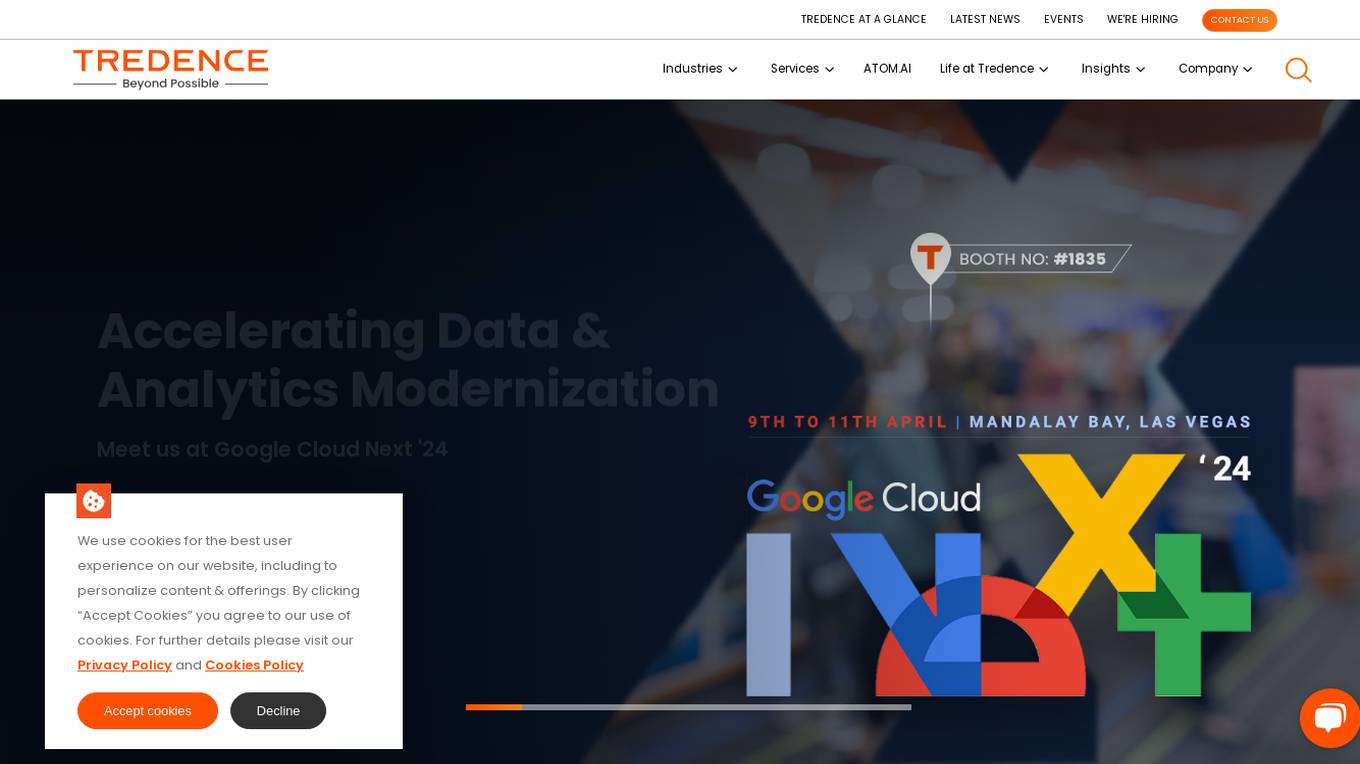
Tredence
Tredence is a data science and AI services company that provides end-to-end solutions for businesses across various industries. The company's services include data engineering, data analytics, AI consulting, and machine learning operations (MLOps). Tredence has a team of experienced data scientists and engineers who use their expertise to help businesses solve complex data challenges and achieve their business goals.

Tecnotree
Tecnotree is a full-stack digital BSS provider with over 40 years of deep domain knowledge, proven delivery and transformation capability across the globe.

IndieFeel
IndieFeel is a website that provides interpretations of songs, movies, and poems. It uses large language models to generate these interpretations, which can be helpful for understanding the meaning of a work of art or getting a different perspective on it. The website is still in beta, but it already has a number of interpretations available, and the quality of the interpretations is generally good.
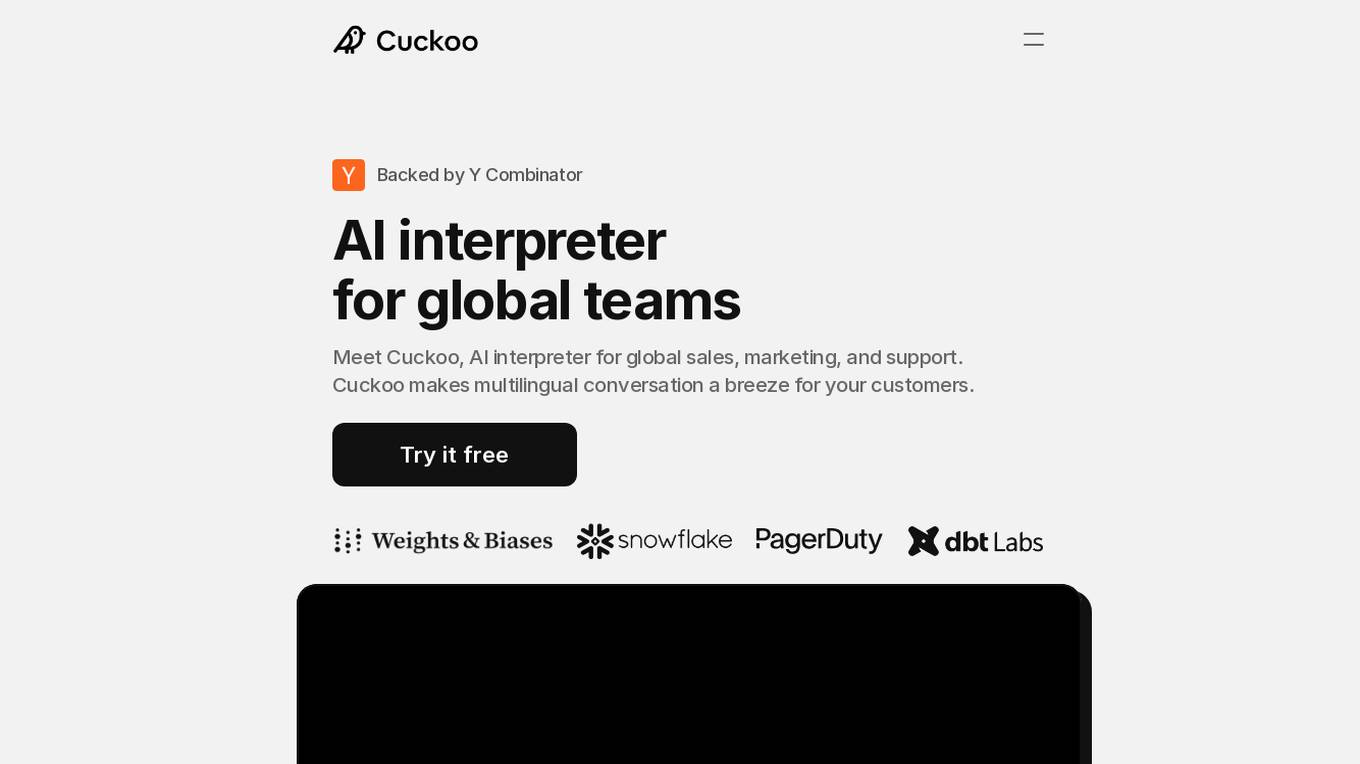
Cuckoo
Cuckoo is an AI interpreter designed for global teams, offering seamless multilingual conversation support for sales, marketing, and customer support interactions. It enables users to effortlessly communicate in multiple languages during meetings and events, adapting to conversations of any size and topic. Cuckoo is powered by large language models, speaks 20+ languages, and can be integrated with popular communication platforms like Zoom, Google Meet, Slack, and Microsoft Teams. The application is user-friendly, requires no prior arrangements or rehearsals, and provides real-time interpretation on the fly.
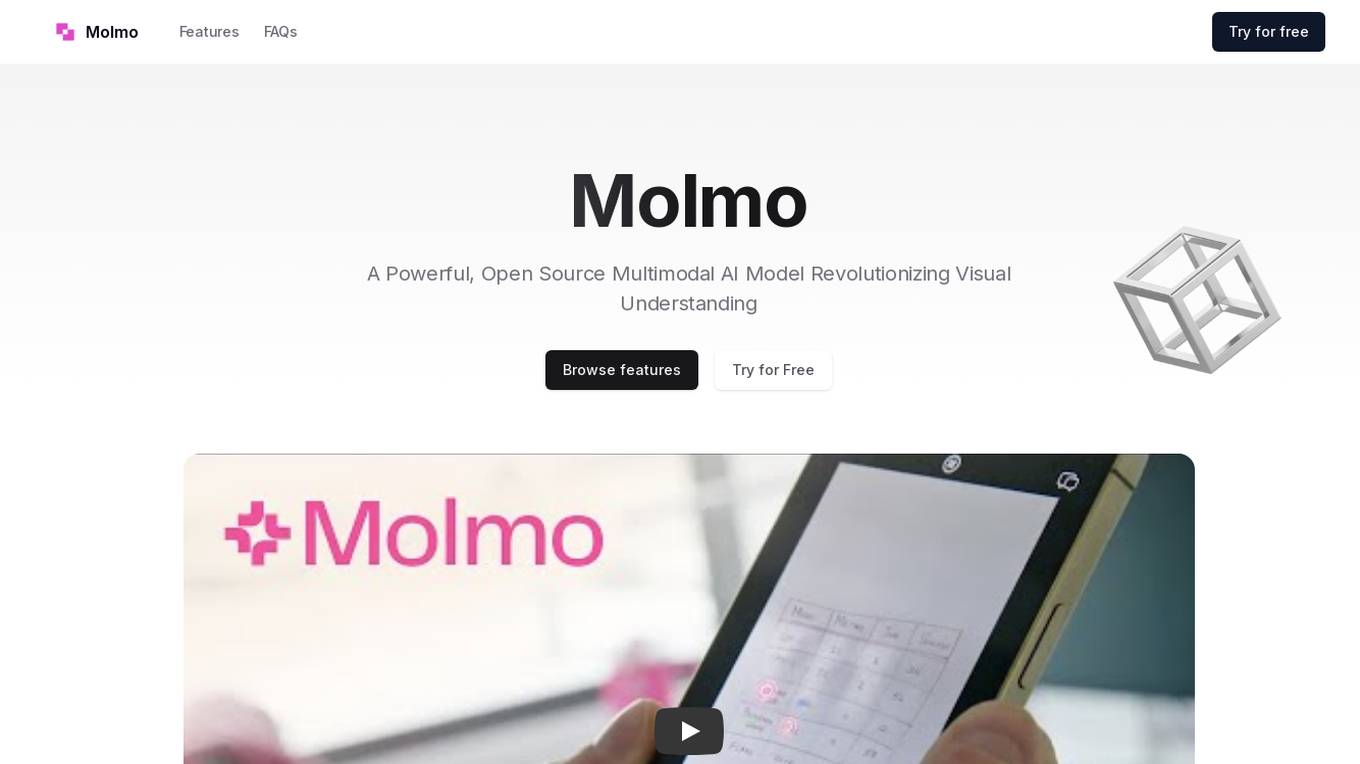
Molmo AI
Molmo AI is a powerful, open-source multimodal AI model revolutionizing visual understanding. It helps developers easily build tools that can understand images and interact with the world in useful ways. Molmo AI offers exceptional image understanding, efficient data usage, open and accessible features, on-device compatibility, and a new era in multimodal AI development. It closes the gap between open and closed AI models, empowers the AI community with open access, and efficiently utilizes data for superior performance.
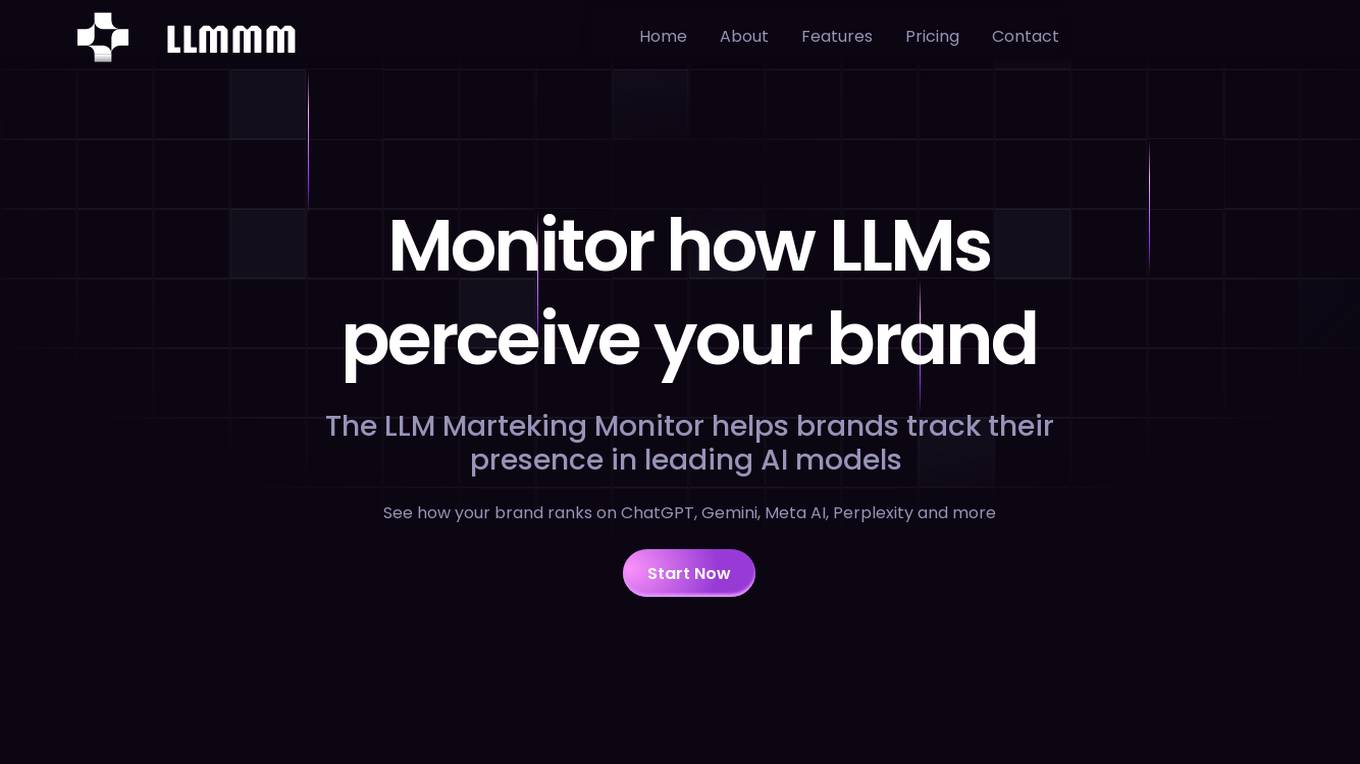
LLMMM Marketing Monitor
LLMMM is an AI tool designed to monitor how AI models perceive and present brands. It offers real-time monitoring and cross-model insights to help brands understand their digital presence across various leading AI platforms. With automated analysis and lightning-fast results, LLMMM provides immediate visibility into how AI chatbots interpret brands. The tool focuses on brand intelligence, brand safety monitoring, misalignment detection, and cross-model brand intelligence. Users can create an account in minutes and access a range of features to track and analyze their brand's performance in the AI landscape.

ChatTab
ChatTab is a desktop application for macOS that serves as a ChatGPT API client, offering a seamless experience for users to interact with various GPT models. It provides a native Mac app with features like Markdown support, multiple tabs for conversations, shortcut keys, iCloud sync, and GPT4-Vision for image-related queries. ChatTab prioritizes security and privacy by not storing user data or logs, and encrypting the API Key. It supports multiple languages and offers different pricing plans to cater to various user needs.
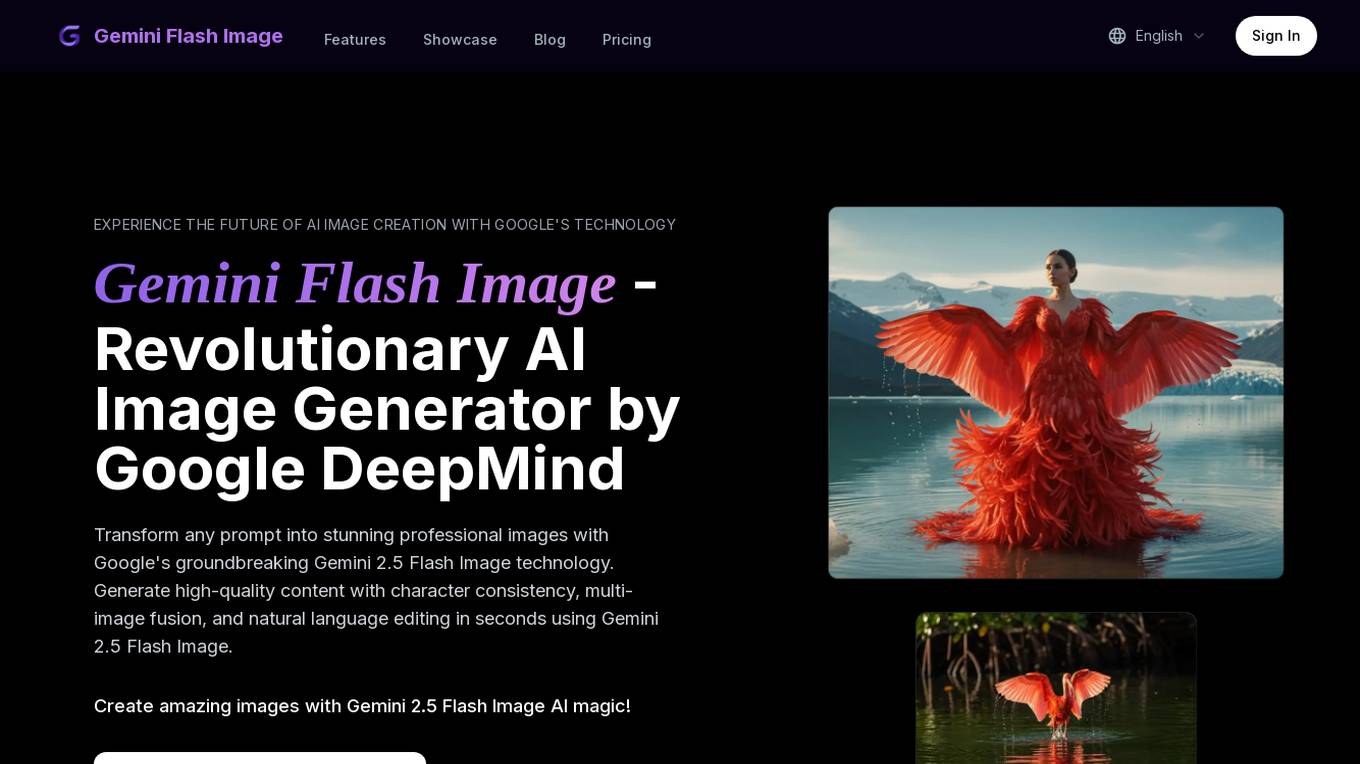
Gemini 2.5 Flash Image
Gemini 2.5 Flash Image is a revolutionary AI image generator developed by Google DeepMind. It allows users to create professional images from simple prompts with features like character consistency, multi-image fusion, and natural language editing. The platform leverages advanced AI models to deliver high-quality results rapidly, making it ideal for creative workflows and professional image generation.
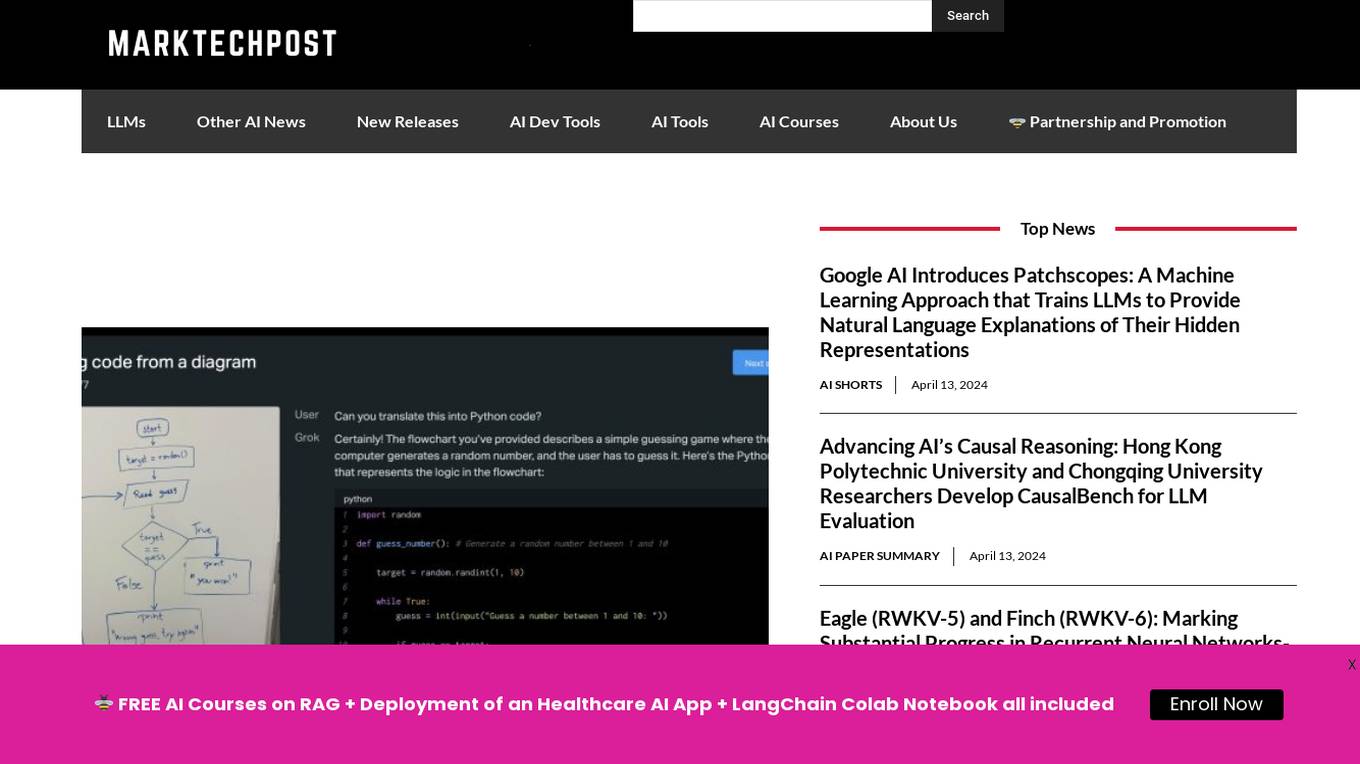
Grok-1.5 Vision
Grok-1.5 Vision (Grok-1.5V) is a groundbreaking multimodal AI model developed by Elon Musk's research lab, x.AI. This advanced model has the potential to revolutionize the field of artificial intelligence and shape the future of various industries. Grok-1.5V combines the capabilities of computer vision, natural language processing, and other AI techniques to provide a comprehensive understanding of the world around us. With its ability to analyze and interpret visual data, Grok-1.5V can assist in tasks such as object recognition, image classification, and scene understanding. Additionally, its natural language processing capabilities enable it to comprehend and generate human language, making it a powerful tool for communication and information retrieval. Grok-1.5V's multimodal nature sets it apart from traditional AI models, allowing it to handle complex tasks that require a combination of visual and linguistic understanding. This makes it a valuable asset for applications in fields such as healthcare, manufacturing, and customer service.
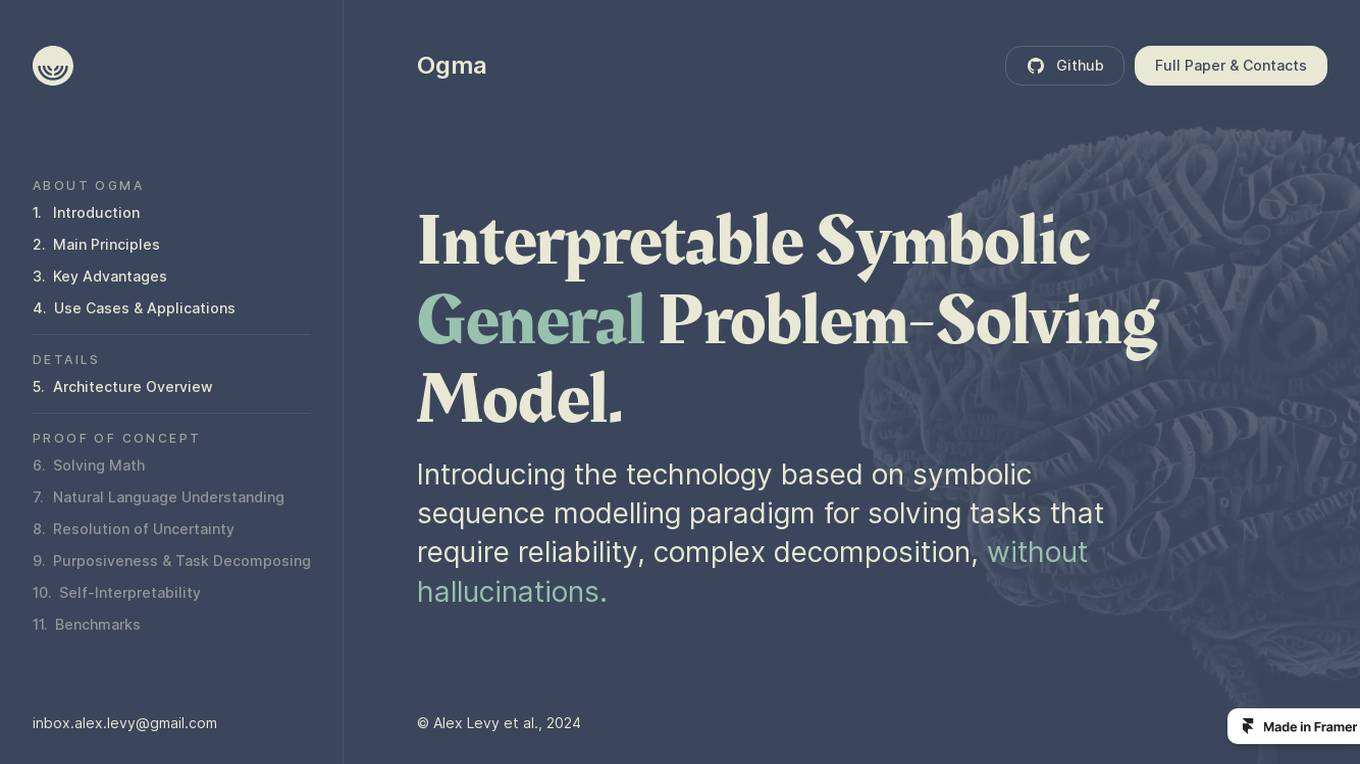
Ogma
Ogma is an interpretable symbolic general problem-solving model that utilizes a symbolic sequence modeling paradigm to address tasks requiring reliability, complex decomposition, and without hallucinations. It offers solutions in areas such as math problem-solving, natural language understanding, and resolution of uncertainty. The technology is designed to provide a structured approach to problem-solving by breaking down tasks into manageable components while ensuring interpretability and self-interpretability. Ogma aims to set benchmarks in problem-solving applications by offering a reliable and transparent methodology.
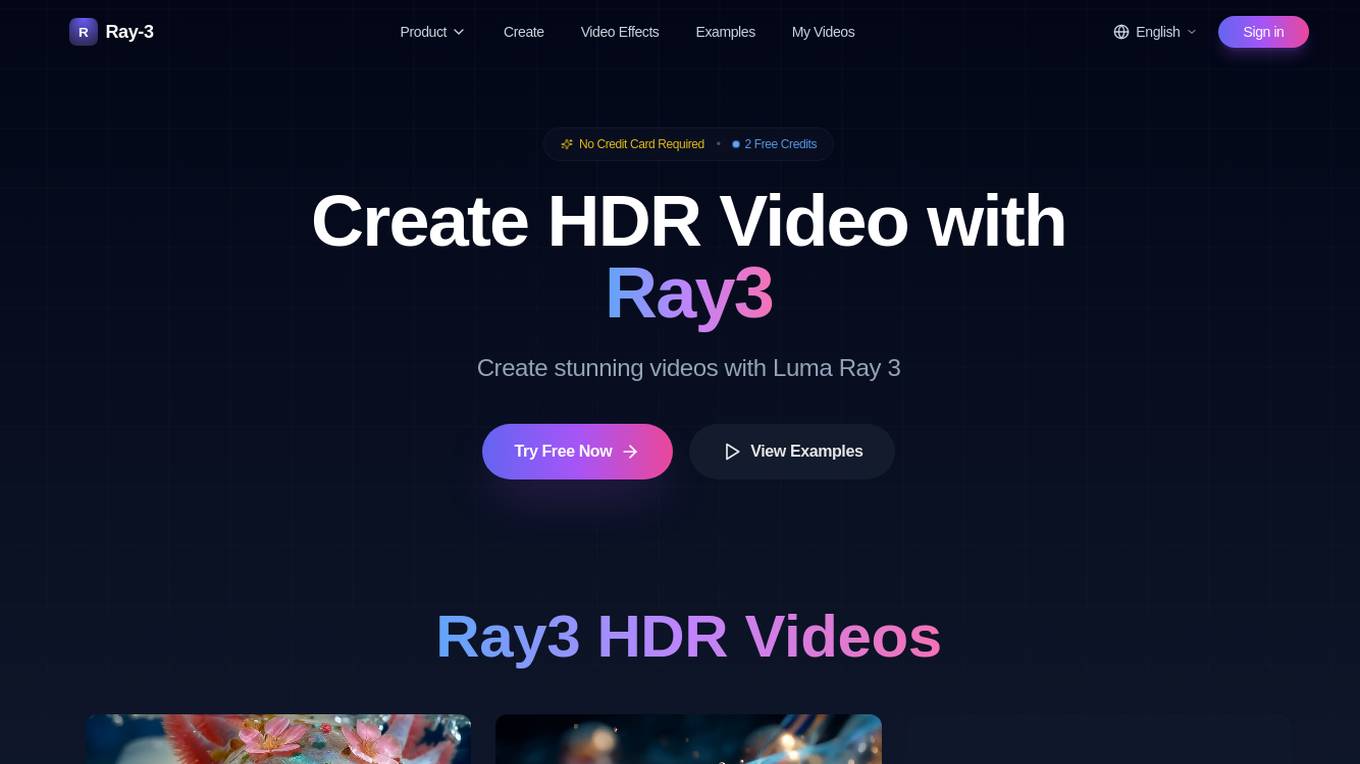
Ray 3
Ray 3 is the first video AI application for reasoning developed by Luma. It offers users the ability to create stunning videos with advanced visual effects and HDR generation. Ray 3 utilizes state-of-the-art visual intelligence to understand user intent, think through concepts, and deliver high-quality video outputs. With features like visual reasoning, 16-bit HDR generation, Draft Mode for faster iteration, and Chain of Thought for interpreting prompts, Ray 3 provides a seamless video creation experience for professionals across various industries.

Eigen Technologies
Eigen Technologies is an AI-powered data extraction platform designed for business users to automate the extraction of data from various documents. The platform offers solutions for intelligent document processing and automation, enabling users to streamline business processes, make informed decisions, and achieve significant efficiency gains. Eigen's platform is purpose-built to deliver real ROI by reducing manual processes, improving data accuracy, and accelerating decision-making across industries such as corporates, banks, financial services, insurance, law, and manufacturing. With features like generative insights, table extraction, pre-processing hub, and model governance, Eigen empowers users to automate data extraction workflows efficiently. The platform is known for its unmatched accuracy, speed, and capability, providing customers with a flexible and scalable solution that integrates seamlessly with existing systems.
2 - Open Source AI Tools
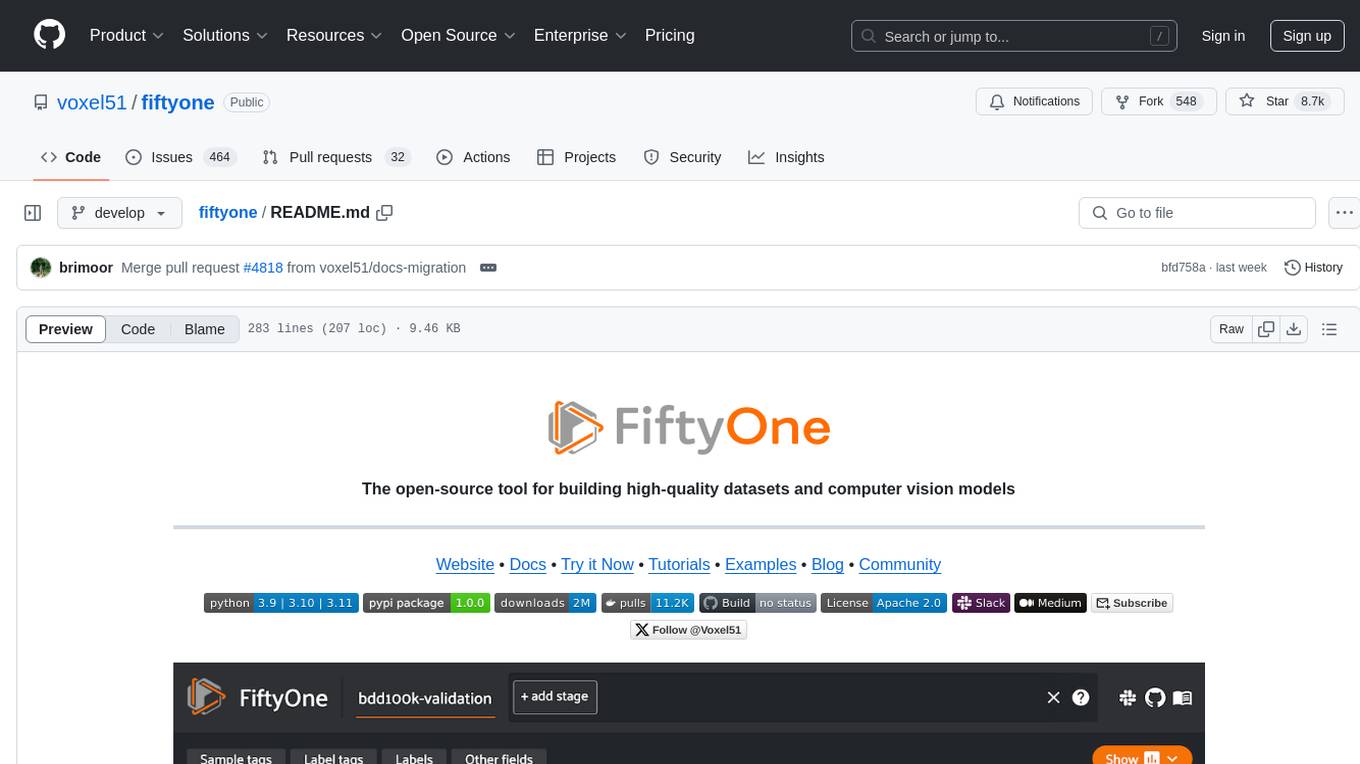
fiftyone
FiftyOne is an open-source tool designed for building high-quality datasets and computer vision models. It supercharges machine learning workflows by enabling users to visualize datasets, interpret models faster, and improve efficiency. With FiftyOne, users can explore scenarios, identify failure modes, visualize complex labels, evaluate models, find annotation mistakes, and much more. The tool aims to streamline the process of improving machine learning models by providing a comprehensive set of features for data analysis and model interpretation.
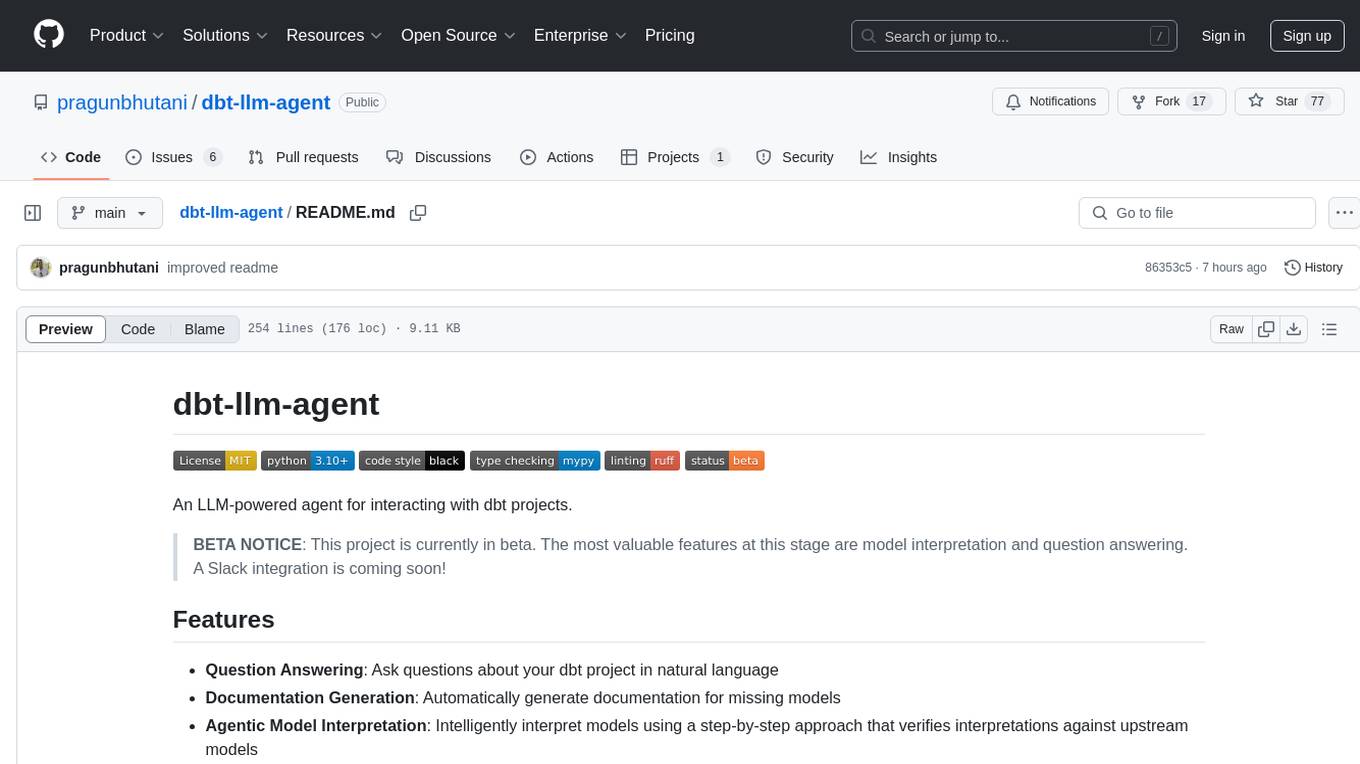
dbt-llm-agent
dbt-llm-agent is an LLM-powered agent designed for interacting with dbt projects. It offers features such as question answering, documentation generation, agentic model interpretation, Postgres integration with pgvector, dbt model selection, question tracking, and upcoming Slack integration. The agent utilizes dbt project parsing, PostgreSQL with pgvector, model selection syntax, large language models like GPT-4, and question tracking to provide its functionalities. Users can set up the agent by checking Python version, cloning the repository, installing dependencies, setting up PostgreSQL with pgvector, configuring environment variables, and initializing the database schema. The agent can be initialized in Cloud Mode, Local Mode, or Source Code Mode to load project metadata. Once set up, users can work with model documentation, ask questions, provide feedback, list models, get detailed model information, and contribute to the project.
20 - OpenAI Gpts
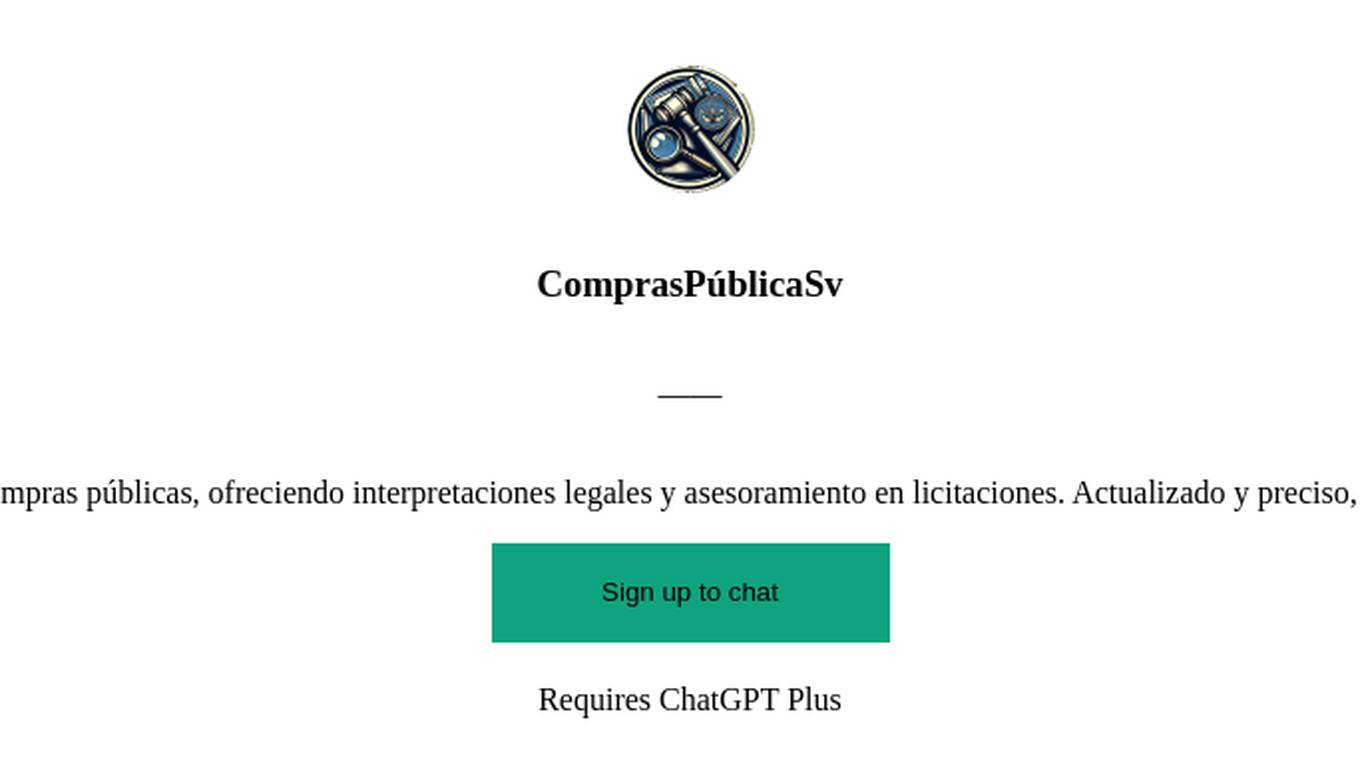
ComprasPúblicaSv
Es un modelo IA especializado en compras públicas, ofreciendo interpretaciones legales y asesoramiento en licitaciones. Actualizado y preciso, es ideal para funcionarios y empresas.
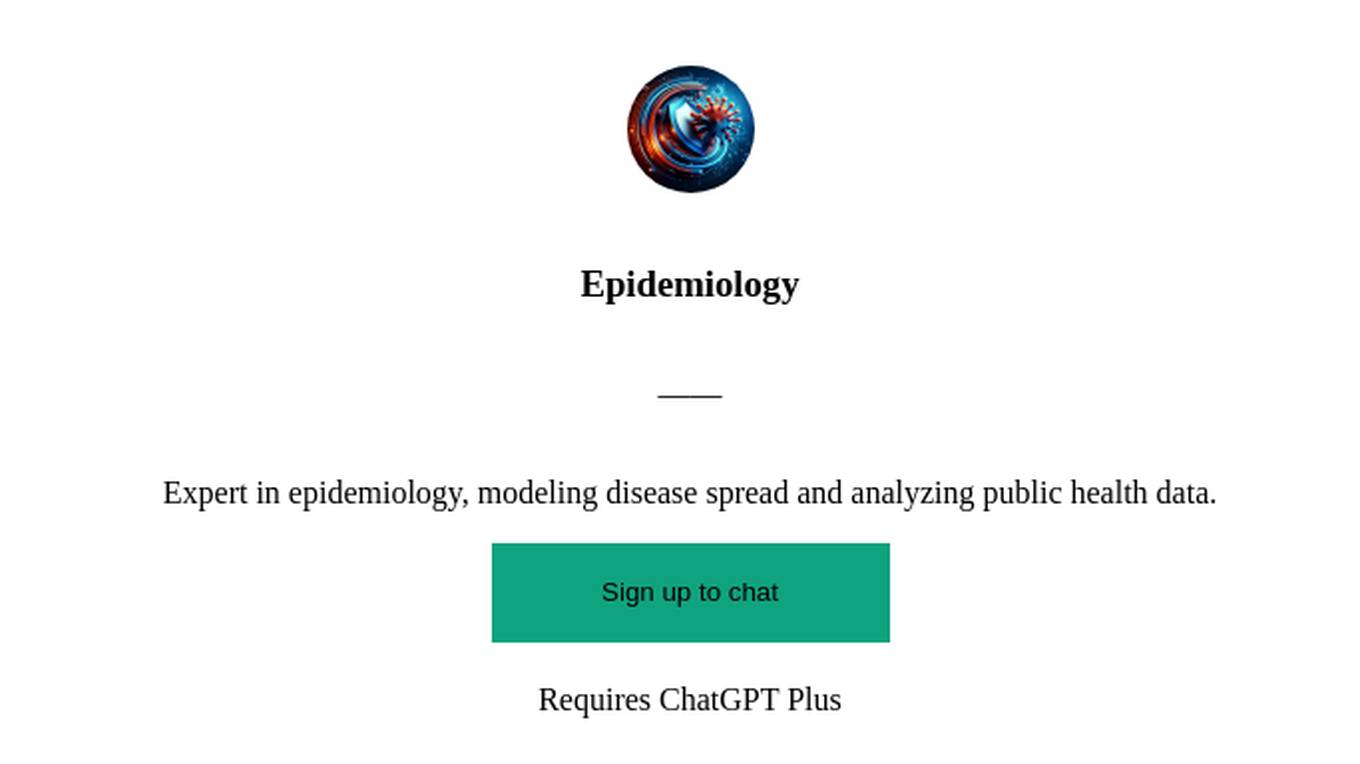
Epidemiology
Expert in epidemiology, modeling disease spread and analyzing public health data.
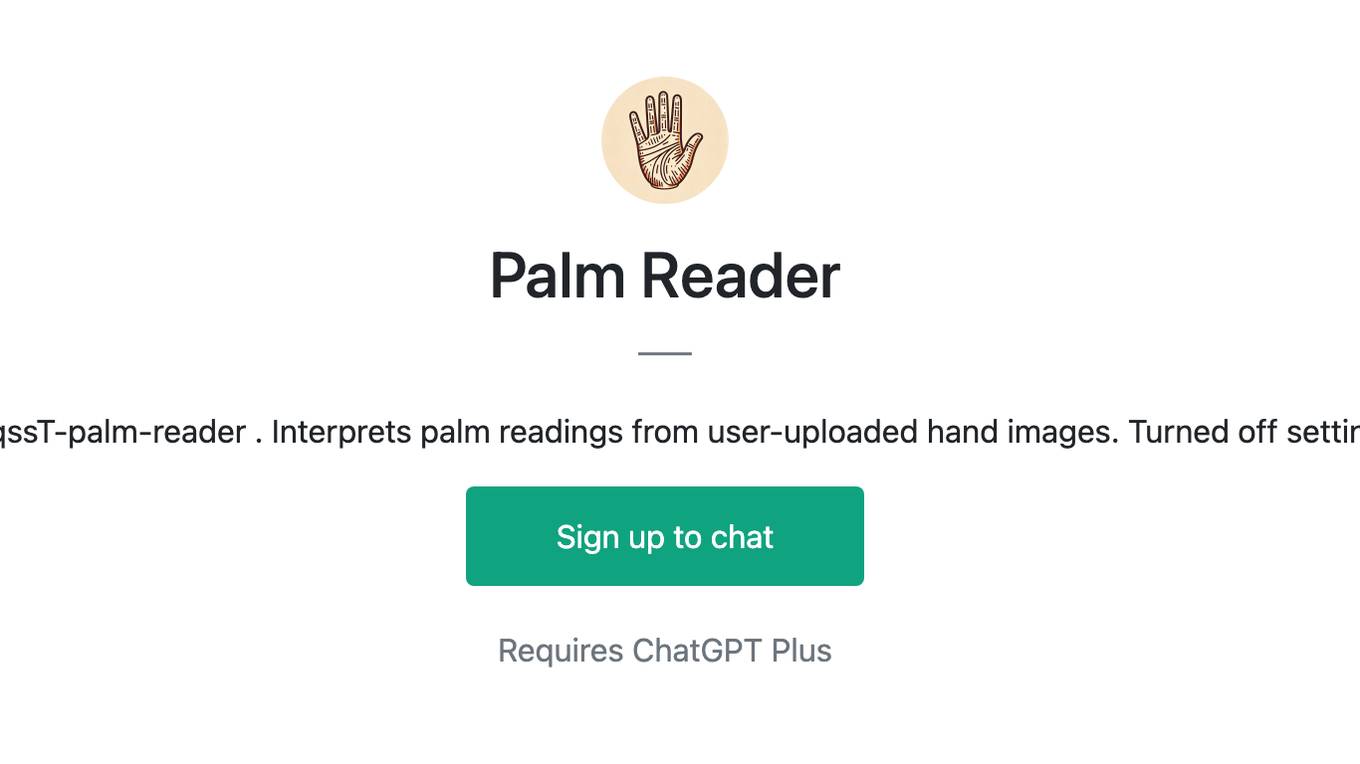
Palm Reader
Moved to https://chat.openai.com/g/g-KFnF7qssT-palm-reader . Interprets palm readings from user-uploaded hand images. Turned off setting to use data for OpenAi to improve model.
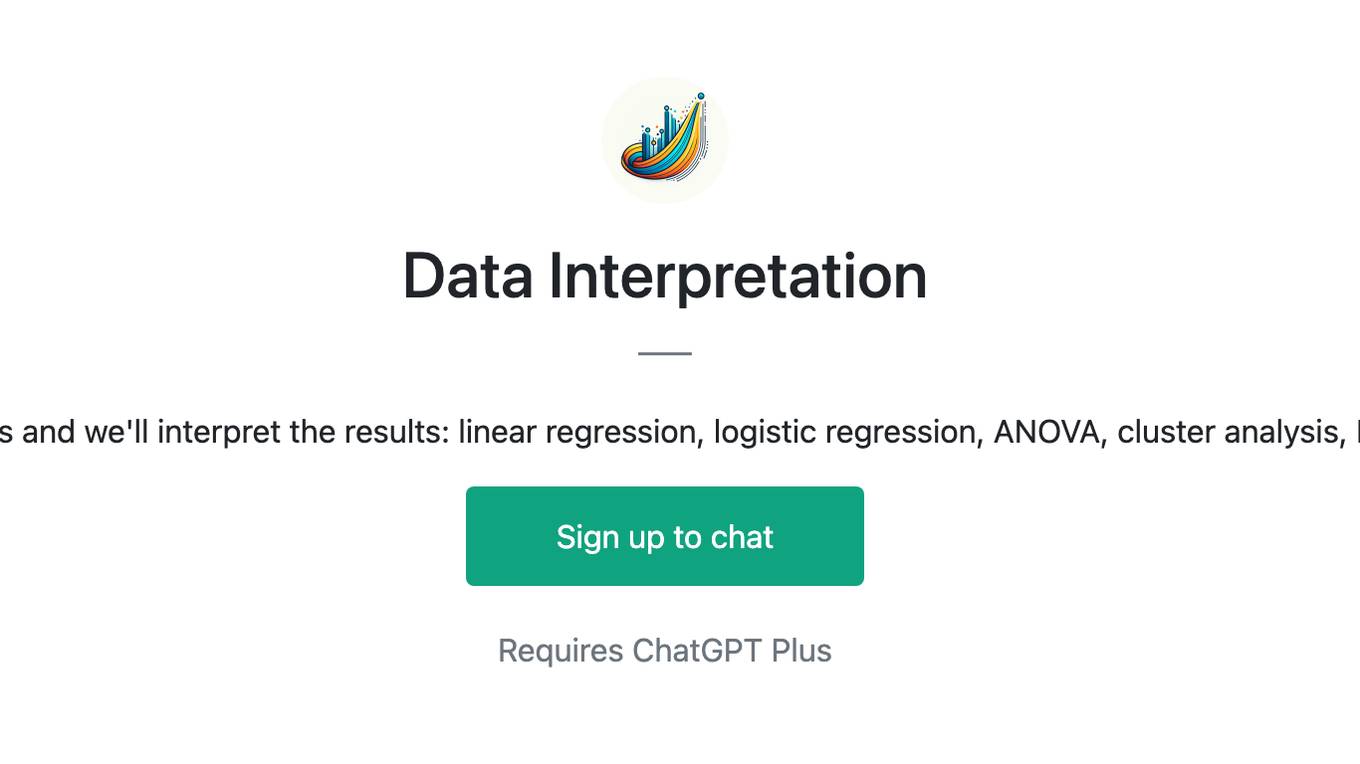
Data Interpretation
Upload an image of a statistical analysis and we'll interpret the results: linear regression, logistic regression, ANOVA, cluster analysis, MDS, factor analysis, and many more
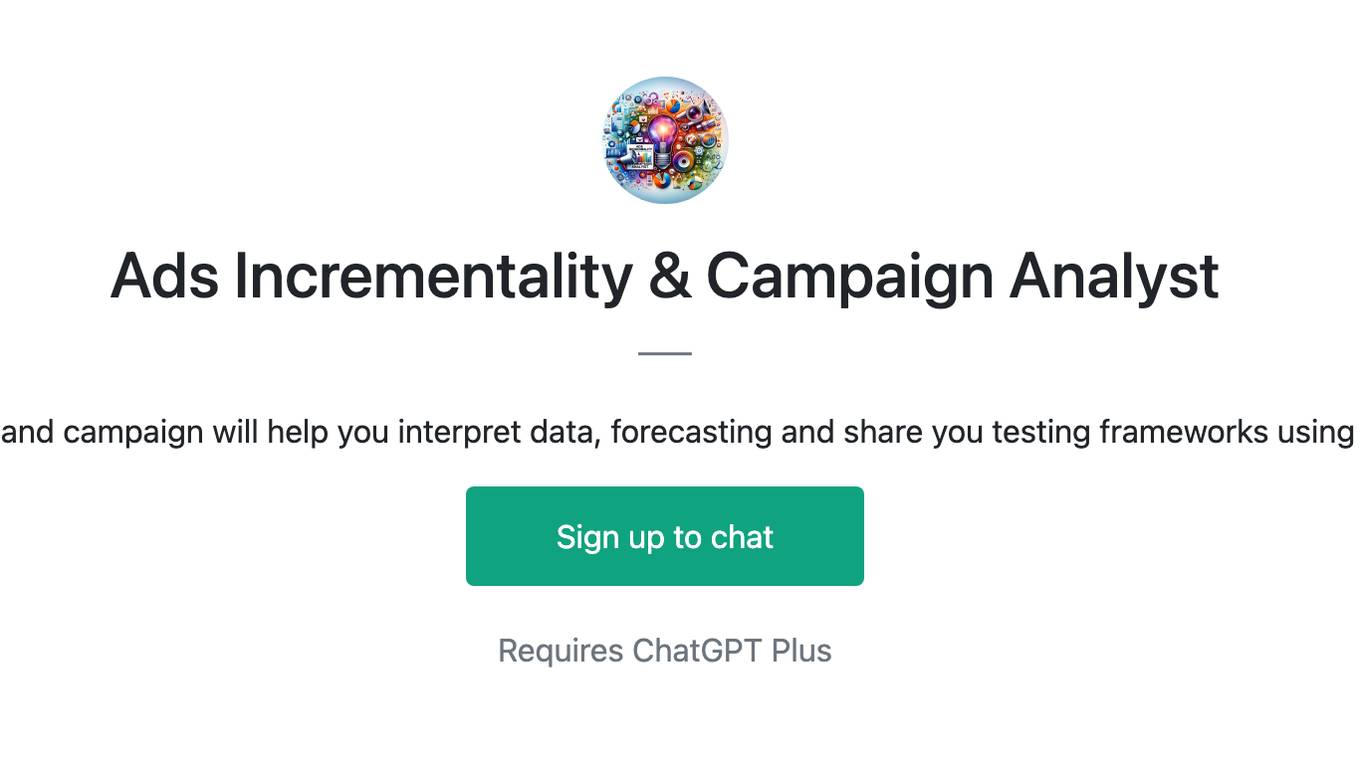
Ads Incrementality & Campaign Analyst
Expert in ads incrementality and campaign will help you interpret data, forecasting and share you testing frameworks using advanced Python libraries
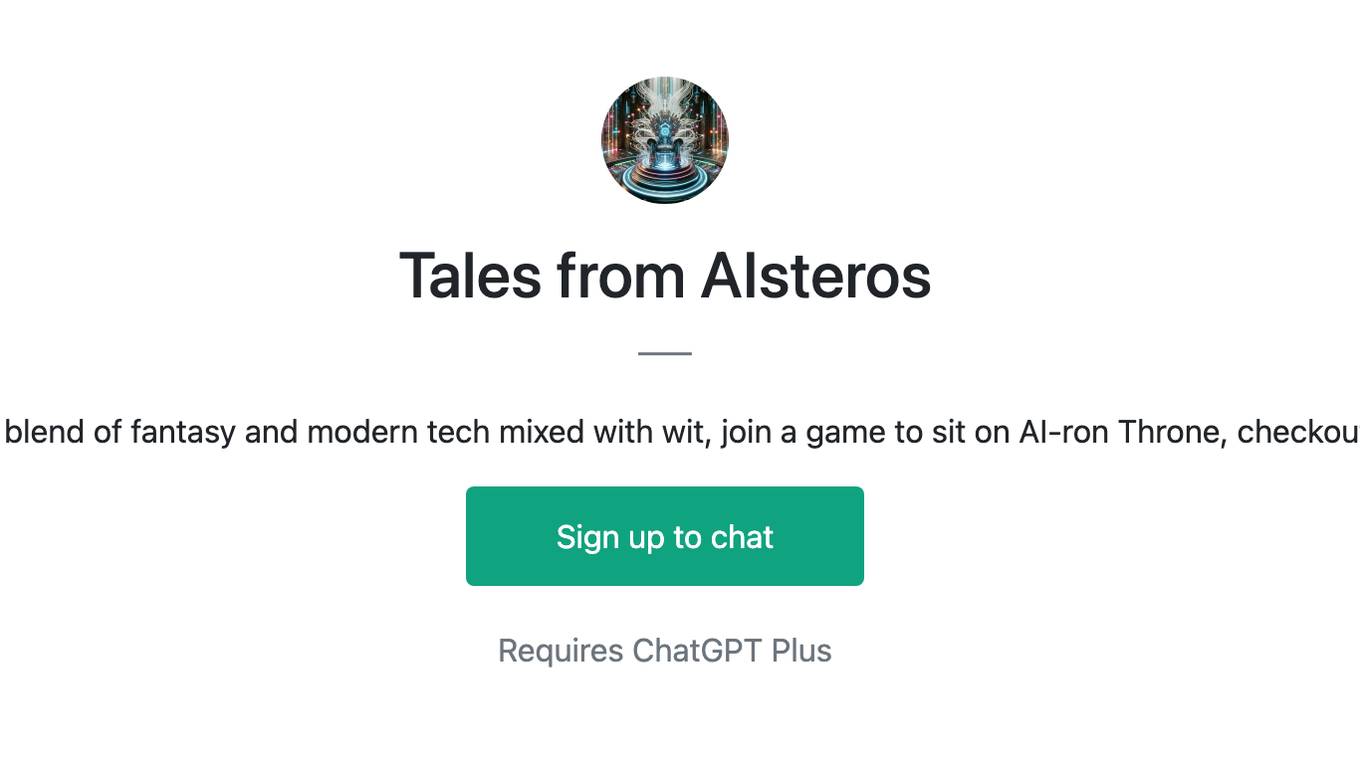
Tales from AIsteros
Interpret AI and technology news trough blend of fantasy and modern tech mixed with wit, join a game to sit on AI-ron Throne, checkout Medium publication V.03 2023-11-26
